#2000s Singapore Artwork
Explore tagged Tumblr posts
Text
Week 5: Artistic Traditions & Lineages
I discovered that paintings serve as a visual insight into Singapore’s history, and all artists follow a style from a renowned artist as reference, making no art original.
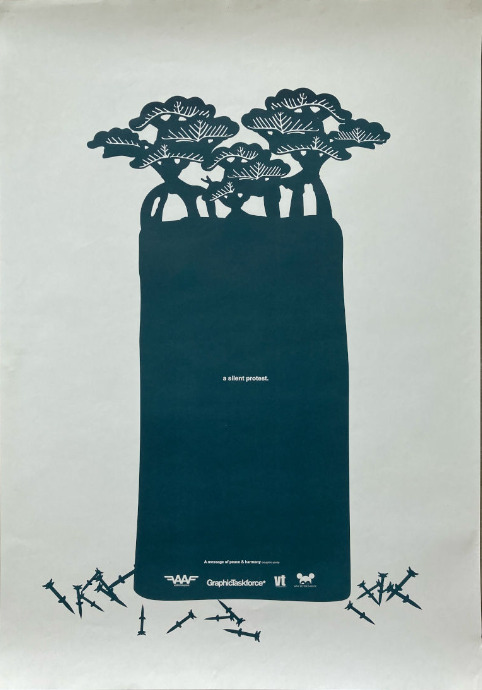
While going through the Singapore Graphic Archives website, the image above caught my attention. As a designer, I like how the use of Adobe Illustrator and Indesign help to create the medium of this poster, which is commercial art. This form of medium is used by Camera Club of the Philippines.
In this poster, repetition, rhythm, and positive-negative space is used to create the Bonsai trees with bombs. Produced in the early 2000s, the creator’s intent is to convey the protest against the American invasion of Iraq in 2003. This advertisement helps to spread awareness of the war, especially if the war is happening in their home country. I appreciate GraphicTaskForce’s efforts in promoting public awareness to garner public support and boost morale.
If I had more time, one thing I would do differently is research further for sources with ample information of its content. This can make my writing more valid with supported evidence of the history. Moreover, I would want to write more about the colour in this poster. For example, the use of 2 colours make the overall visual modern and minimalistic.
In my opinion, knowing artistic traditions helps to create new ideas. Having the knowledge of Singapore’s history serves as an inspiration for the concept of future projects.
(240 words)
Notable references:
Collections”, National Gallery Singapore, 2023,
https://collections.nationalgallery.sg/#/. Accessed 12 Nov. 2023.
Collections”, Roots, 2023,
https://www.roots.gov.sg/Collection-Landing. Accessed 12 Nov. 2023.
2 notes
·
View notes
Text
WK 4 & 5 : REFLECTIVE WRITING
This week, I came to appreciate the significance of thoroughly understanding and observing identity during my special visit to the National Gallery of Singapore.
The gallery features a wealth of creative and intriguing artworks, and my focus was on developing critical thinking by delving into the historical context of these pieces to shed light on their identities.
One artwork that caught my attention is Chua Mia Tee's ‘National Language Class.’

The warm and soft tones of his artwork represent human warmth and solidarity. It not only conveys a strong will reflective of the atmosphere of their time but also delivers a hopeful message of moving toward a better future.
Choo Keng Kwang uses the intense and rugged atmosphere of woodblock printing to suggest the social and ideological sentiments of Singapore. Among his works, 'Incident 513' is one of the most representative.

Exploring artworks through this historical context goes beyond understanding the pieces; it greatly helps in establishing the value of my design and personal branding.

Through such activities, I gain cultural depth in design and branding, which will be advantageous in enhancing brand credibility and connecting with customers. One effective example that comes to mind is Coca-Cola's 'Share a Coke' campaign.

This campaign was a successful initiative that significantly improved customer engagement and brand loyalty. Based on this case, I strive to combine the insights gained from exploring artworks into my Studio's Festival concept development.
A unique identity provides design consistency, which is essential for conveying a coherent message and image across various channels and platforms.
(~255 words )
References:
ROOTS. “National Language Class, Chua Mia Tee, Singapore, 1959, oil on canvas.” ROOTS, 2022, https://www.roots.gov.sg/stories-landing/stories/the-singapore-story-through-60-objects/art-historical/national-language-class/story. Accessed 10 Sept 2024.
ROOTS. “'5-1-3 (May 13th Student Riot).'” ROOTS, 2000, https://www.roots.gov.sg/Collection-Landing/listing/1132595. Accessed 10 Sept 2024.
Jay Moye , "Share a Coke: Bigger and Better Than Ever" , 18 May 2015, Coca-Cola News, https://cocacolaunited.com/blog/2015/05/18/share-coke-bigger-better-ever/, 13 Sep 2024
Foscht, Thomas, and Cesar Maloles. “The impact of culture on brand perceptions: a six‐nation study.” emerald insight, 2008, https://www.emerald.com/insight/content/doi/10.1108/10610420810875052/full/html. Accessed 12 Sept 2024.
0 notes
Photo

Fragments of Cheng Ho: The Usable Past
Four-channel video, 3D models and various found objects Video duration: 4 - 6 minutes Dimensions variable 2022
For the past several years, Chu Hao Pei has embarked on numerous research trips across Southeast Asia, travelling to Java (Indonesia), Malacca and Penang (both Malaysia) and Ayutthaya (Thailand) for the long-term and extensive project Cheng Ho: The Vernacular of Southeast Asia. Centred around the slippages and contradictions related to contemporary manifestations of Cheng Ho (1371 – 1433)—a Chinese-Muslim eunuch sent by the Ming dynasty Emperor Yongle on expeditionary voyages—the larger project unravels in presenting a non-aligned, non-exhaustive and non-linear of this multifaceted figure. An icon of mobility, Cheng Ho has been localised and moulded to serve various nationalistic and cultural narratives, and his present-day significance reverberates across numerous cultural and political contexts.
In this iteration of Fragments of Cheng Ho: The Useable Past, Chu focuses on this historical figure’s significance in Singapore by zeroing in on four sites: Labrador Park, Haw Par Villa, Former Maritime Experiential Museum and The Former Marina City Park. Engaging with the histories, accounts and developments of each of these locations are a series of videos, miniature site monuments and archival sound recording. The artworks underscore Cheng Ho’s associations with state-fuelled endeavours and various commemorative projects from the late 1980s to the 2000s that coincided with a resurgent interest in this historical figure and its connections with mobility, diplomacy, alongside other geopolitical shifts of the period.
*
Over the centuries, Southeast Asia has been a nexus of a global exchange of ideas, people and objects. Spanning multiple geographies and networks, the research projects in this exhibition examine various chapters and figures in the histories of Singapore and the region, proposing alternative approaches to understanding these historical accounts. Chu Hao Pei, Debbie Ding and Marvin Tang excavate often overlooked stories, archival material and cumulative records to investigate how narratives about these figures and episodes are constructed. The works in Evolving Currents are new iterations of long-term research projects developed by the artists. By adopting speculative or interrogative approaches to reading these accounts, the works suggest that interpretations of history constantly evolve in response to shifts in socio-political landscapes. The works invite us to evaluate the significance of these chapters in history and the impact they continue to have on our present-day lived realities.
Curated by Lynda Tay & Lu Xiaohui Text by Lynda Tay Video Links: Fragments of Cheng Ho - The Usable Past: Chinese Garden Fragments of Cheng Ho - The Usable Past: Haw Par Villa Fragments of Cheng Ho - The Usable Past: Dragon Teeth's Gate Fragments of Cheng Ho - The Usable Past: Maritime Experiential Museum
0 notes
Photo

Art Event Of The Day. Art R'eev is all ready to welcome our distinguished Guests TODAY..!!! WHAT'S HAPPENING..?? "SAMPAH MASYARAKAT" (Trash In A Community) Solo Exhibition (3rd Edition): By Art R'eev. WHERE'S THE LOCATION..??? 195 Pearl's Hill Terrace, #03-56, Singapore 168976 PS: Nearest MRT Stations Are Outram & Chinatown. WHEN IS THE ART EVENT..??? 03-08 July 2021 Sat-Thu 1200-2000 Hours Special mentioned to the people behind the scene. Thank you to @vincentchiajitkiat for the opportunity to use the space for art exhibition. Transform the space into an art landscape. Thank you to @cc_artfully for helping out in the setting up. Thank you to @sulaiman_surani for the poster artwork. Thank you to @pretty243 @sititimtim @polkadot_rainbow @just_achul for donating the materials. Indeed, this is a community effort towards SUSTAINABILITY..!!! The Solo Exhibition would not be made possible without the support from my family, friends & followers. Feeling blessed to be surrounded with such wonderful people around my social circle. There's a SURPRISE awaits you..!!! Only to the 1st-20th Guests are entitled for the LUCKY DIP. You may walk away with an art piece from Art R'eev as a gesture of goodwill for visiting the Art Exhibition. This is just a small token of appreciation to signify the moment. Just a gentle reminder, that all Safety Management Measures (SMM) are to be adhered due to the Covid19 pandemic. Your kind cooperation & understanding is much appreciated. The Artist is NOTHING without your unwavering support. With your continuous support that enabled me to pursue my passion as a Self-taught Artist till today. See you there..!!! Have An ARTY-Licious Weekends..!!! Artfully Yours, Art R'eev #art_reev #artexhibition #artshowcase #artspace #artrealm #artlandscape #artculture #art #artwork #abstractartwork #upcycling (at 195 Pearl's Hill Terrace) https://www.instagram.com/p/CQ1kebJByXI/?utm_medium=tumblr
#03#art_reev#artexhibition#artshowcase#artspace#artrealm#artlandscape#artculture#art#artwork#abstractartwork#upcycling
1 note
·
View note
Text
2019 11 01-30
01 Fri
Live time
Woolen Men Japan Tour
出演/ Woolen Men (from Portland, US),
FLASHLIGHTS,
THE NESO
Open 19:30 Start 20:00
Adv. ¥3000 Door ¥3500 (+1Drink)
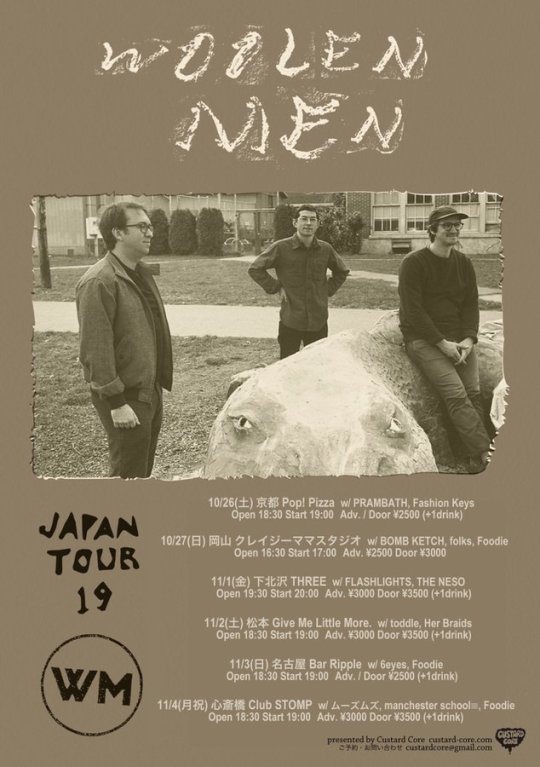
Club Time
VIENDA!
to be announced..
02 Sat
Block party at THREE SHIMOKITAZAWA
11.2 (Sat)
17:00-23:00
Name Your Price (投げ銭制)
Live/
bulbs of pussion
JAPPERS
low-low
Ryo Makino and The Undertakers
THREE RING CIRCUS
and more

03 Sun
Day Time
threadyarn presents burn up the existence vol.8 threadyarn 3rd album「flux」release 2man show open/12:30 start/13:00 adv/¥2000- day/¥2500- +1drink sassya- threadyarn

Live Time
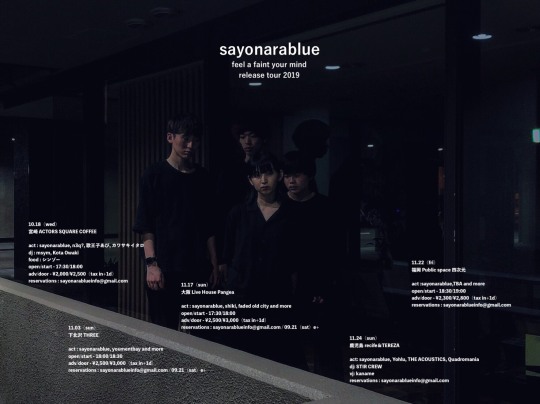
sayonarablue “feel a faint your mind” release tour ■11/3(日)下北沢 THREE act : sayonarablue, youmentbay and more OPEN 18:00 START 18:30 前売¥2,500(税込・ドリンク別) 当日¥3,000(税込・ドリンク別)
04 Mon

℃-want you!1stアルバムリリース&ソロ2周年記念ワンマンライブ
『Don't Touch Her!』
GUEST BACK BAND ミートザホープス
open18:00
start19:00 前売¥2,400(+1d)
05 Tue
お休みを頂きます
06 Wed
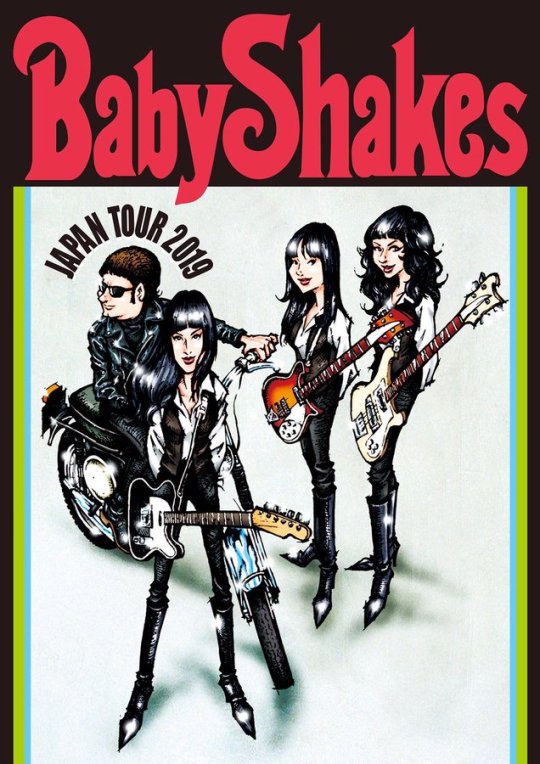
Baby Shakes (from NYC) will come to Japan again!!!
w/ MANDES ROCKJUICE YOUNG PARISIAN +DJ MALLY VIOLET
開場:19:00 開演:19:30
前売料金:3500yen当日料金:4000yen
ticket https://eplus.jp/sf/detail/3086280001-P0030001P021001?P1=1221
07 Thu

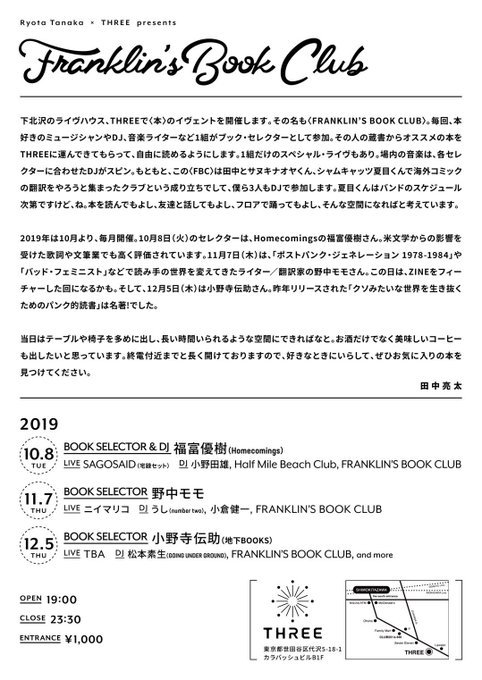
BOOK SELECTOR:野中モモ
LIVE:ニイマリコ
DJ:うし(number two), 小倉健一, FRANKLIN’S BOOK CLUB
19:00〜23:30
¥1,000 (+1Drink)
08 Fri
なりすレコード&TRASH-UP!!presents カイ 7インチ・シングル発売記念リリースパーティー 開場18:45/開演19:15 予約2000円/当日2400円(+D代) 出演: カイ XOXO EXTREME SAKA-SAMA NaNoMoRaL 吉田哲人 予約は下記もしくは出演者各運営まで
09 Sat
9party
-NINE IS A MAGIC NUMBER-
19:00-25:00
投げ銭 / NAME YOUR PRICE
※飲食の持ち込みはご遠慮下さい。
Live/
A PAGE OF PUNK
松田chabe岳二
オーサカ=モノレール
GORO GOLO
V/ACATION
DJ/
うし
しょ☆
福田俊介
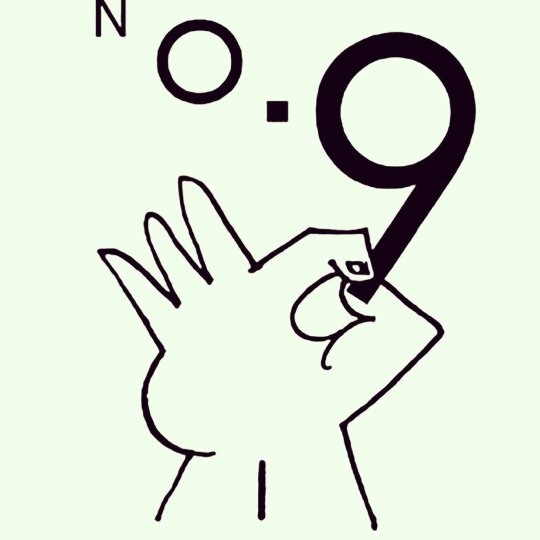
10 Sun
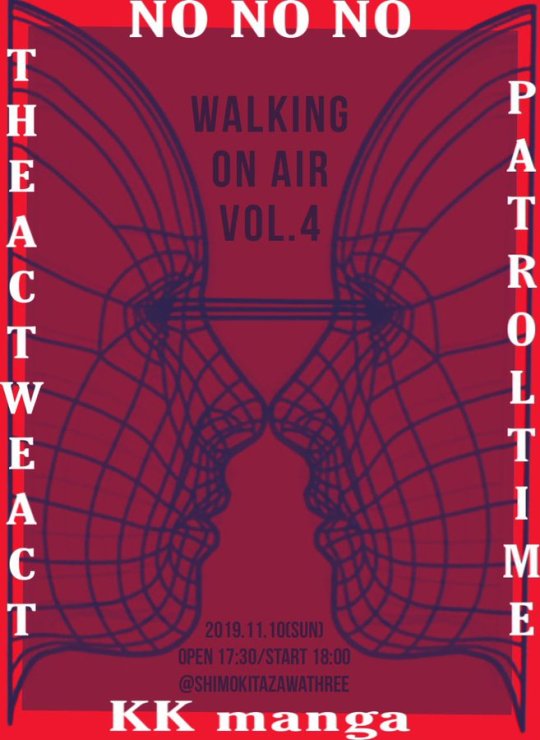
“Walking on air vol.4”
Open 17:30/Start 18:00
---Live---
THE ACT WE ACT
NO NO NO
KK manga
PATROL TIME
ADV/DOOR ¥2000+1d
Teenager ¥1400+1d
11 Mon
【ORANGE POOPLE】
open/start 19:10 close 23:40 live: KIRIHITO VOVIVAV サーファーズSUN No Sister (from Australia) dj: suimin Maco K.E.I. food: THUG CURRY LIFE paranoia shop: hot-cha archives fee: adv.3500yend day.4000yen flyer artwork: Kei Kubo flyer design: Takatomo Tomita venue: shimokitazawa Three http://www.toos.co.jp/3/3_access.html 東京都世田谷区代沢5-18-1 カラバッシュビルB1F info : http://www.ooo-yy.com/gallery/?? ※前売りチケット予約 ((予約方法1.)) 10/10~公演前日の11/10まで shimokitazawa THREEにて [店頭前売販売] [ウェブ予約] http://www.toos.co.jp/3/3_info.html ↑左下の【TICKET RESERVATION】に詳細ありますので お読みになった上バナーをクリックしメールをお送り下さい。 ((予約方法2.)) 10/10~公演前日の11/10まで [email protected] へ 件名を『ORANGE POOPLE 予約』として ・お名前(フリガナ必須) ・電話番号 ・予約枚数 を明記し、お送りください。 確認後、返信メールをお送りします。 ※1.2.いずれの場合もキャンセルされる場合は必ずご連絡をお願い致します

12 Tue
to be announced..
13 Wed
SYMBOL 1st ALBUM「THE SYMBOL」OUTSTORE PARTY
START 19:00〜
DOOR ¥2000(+1d)
☆SHOW SYMBOL ロベルト吉野 サヨナラボーイ
DJ HAMA
-TICKET RESERVE- [email protected]

14 Thu
to be announced..
15 Fri
Block Party
Name Your Price (投げ銭制)
22:00 open start
出演
いとま
Enya'Callers
The Plashments
ya mai mo
Yodocolts
DJ/
ban
iGOD
showhow

16 Sat
Day Time / Live Time
videobrother主催イベント【超】馬鹿と煙 @下北沢BASEMENT BAR & THREE 【OPEN】13:00 【CLOSE】22:00 【ADV / DOOR】 3,500円 / 4,000円(共に1d別) 【LIVE】videobrother / 雨ふらしカルテット / アラゲホンジ / CABALLERO POLKERS / 銀幕一楼とTIMECAFE / クンクンニコニコ共和国 / senkawos / たをやめオルケスタ / ドン・マルティネス / 紫ベビードール / monoral zombie 【DJ】shima(Alegre) / ビブラスキ(Betty Angelica) / NAKANO(DRINK’EM ALL) 【Food】はや亭カレー and more...
e+ https://t.co/liZBHATiWJ?amp=1
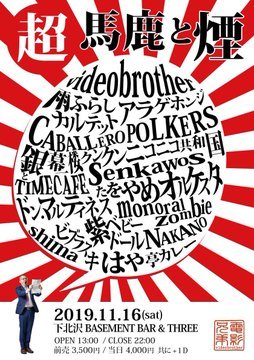
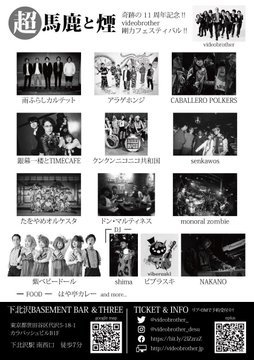
Club Time
LOVE ME TENDER
CAT BOYS
DOUBLE RELEASE PARTY
muupy
MARU
SEI
COMPUMA
23:30~
¥1,500 (+1D)
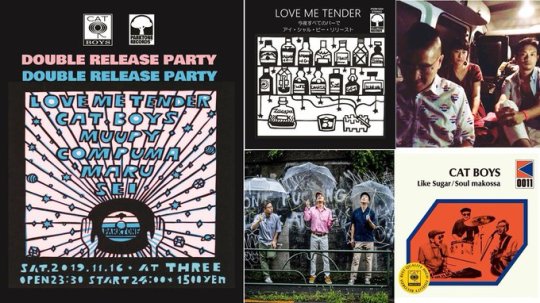
17 Sun
Day Time
加納エミリpre 秋のファ��リーコンサートvol.3
w/ 佐藤優介 with ULTRA-VIOLENCE
開場11:30 / 開演 12:00
通常:前売 ¥2,500 / 当日 ¥3,000
女性割:¥1,500
学割:¥500 (学生証の提示が必須となります)
※全て1D別
ご予約 https://tiget.net/events/63772

Live Time
the PRACTICE『flowers in your dustbin』Release Party ! 東京編
open 17:30 start 18:00
前売2,000円 当日2,500円+ドリンク
出演:the PRACTICE、LEARNERS、WOOMAN
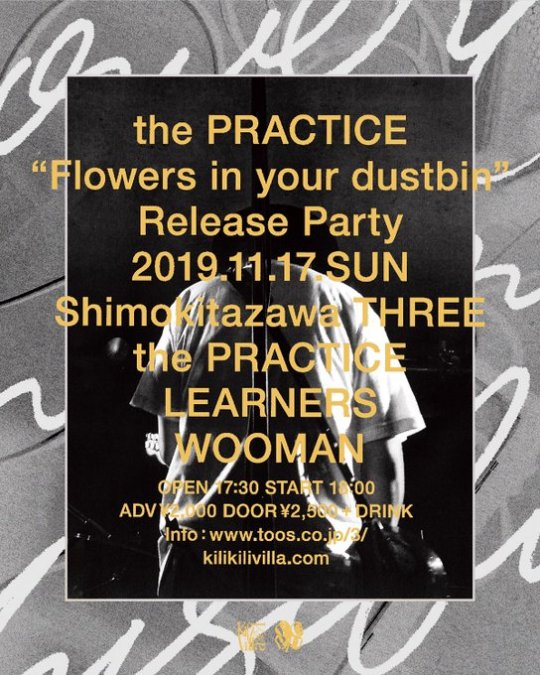
18 Mon
THREEの実験室
19:00 open
¥1,000 (+1D)
出演/
Boy Objects
INDO
NIKO NIKO TAN TAN
カメレオン・ライム・ウーピーパイ
ムーピーゲーム
10 p.m. tuesday
19 Tue
【下北沢three寄席】
open&start 19:30
¥1000(+1d)
LIVE
キッズ乙女キャンディランド
OCHA∞ME
お笑い
ゴールデンアナコンダ
エジソンドライブ
ドラゴンニンジャ
トニーフランク
ワラバランス
アセチルサリチル酸ゴスケ
さんさんず
ダイヤモ��ド
カナメストーン
DJ
珍盤亭娯楽師匠
SUSHIRAW
FOOD
チーム天地創造

20 Wed
最高のウィークデイナイト
『Kira Kira Vol.20』 2019.11.20(wed) @下北沢THREE 開場/開演 19:00 チャージ ¥1,000(+2D) ■出演■ worst taste 篠原篤一(from smell) THE WAMEKI THE URCHIN ■DJ■ Ataraw(GROUNDCOVER.) DJ ナンバーワン野郎 as KMC ■FOOD■ Ms.HUDSON
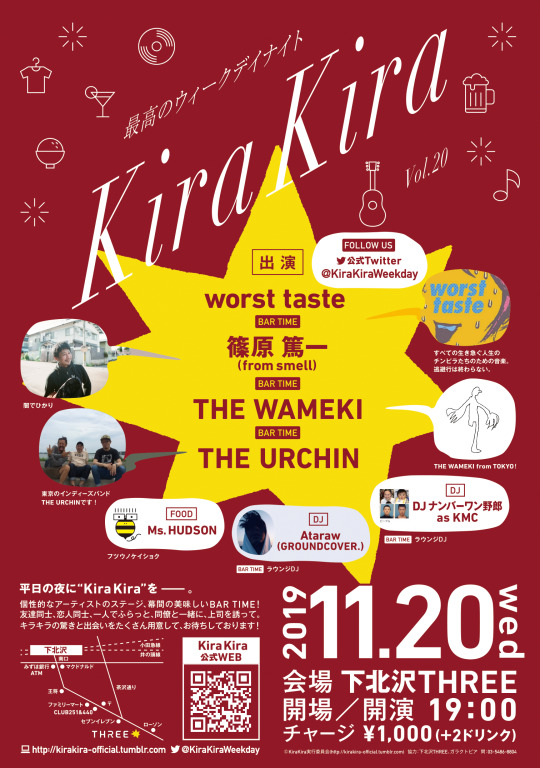
21 Thu
Undiscovered Pyramids
出演
Annnapurna
Three Ring Circus
Shoko
Ryo Makino and The Undertakers
出店
Sandwitch mitama
Itoli chang
open 19:00 start 19:25
1000円+1ドリンク
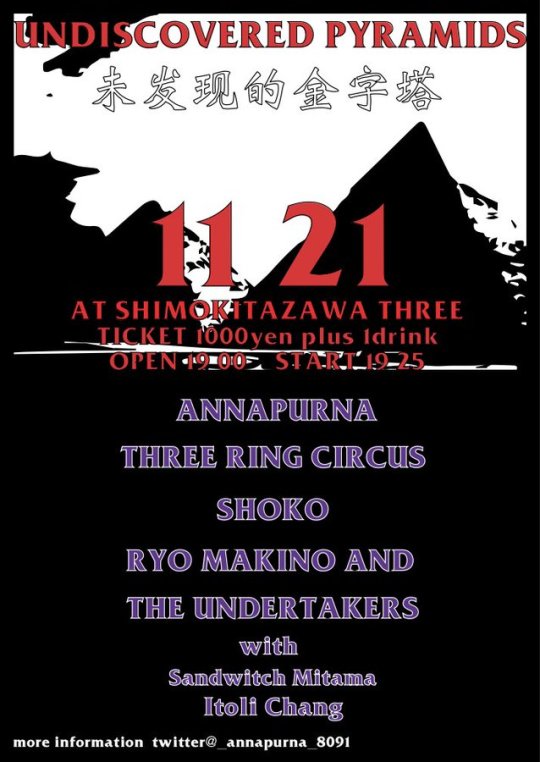
22 Fri
POLTA自主企画「IS CONNECTED scene 8」
2019年11月22日(金)
開場19時
開演19時30分
前売り2800円+1D
当日券 3300円+1D
出演:POLTA、PLASTIC GIRL IN CLOSET
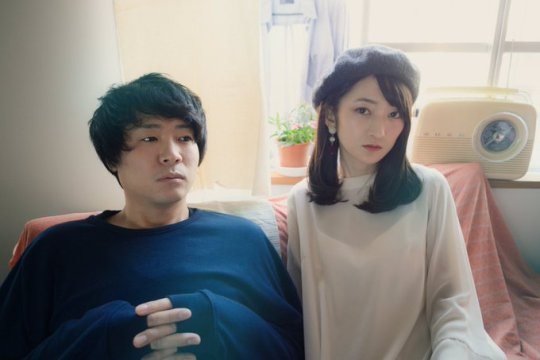
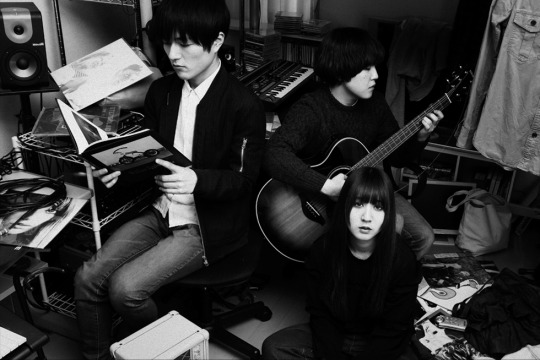
23 Sat
Day Time
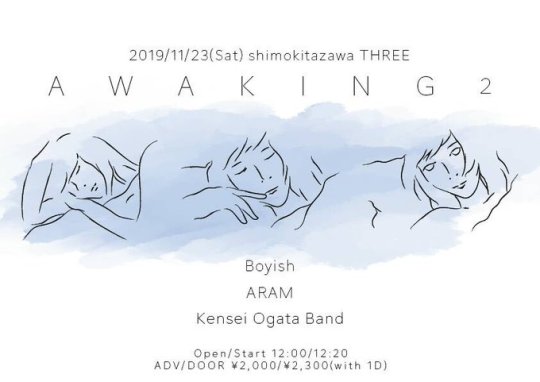
Awaking 2
boyish / kensei ogata /ARAM
予約/当日 2000/2300 (1ドリンク)
Open/Start 12:00/12:20
Live TIme
BLAST JAMS!! JAMAICA SPECIAL
OPEN 18:00 CLOSE 22:30
Charge:¥2500+1D
Live:
BIG STUFF ALLSTARS
(Ds 森俊也、Bs モッチェ永井、Gt リンテ伊藤、Key 外池満広、As 大沢広一郎、Ts森影亘)
Mighty Ruler
UpDown Beats
Aston Dubrass
Guest Selector Mar-ley
Selector 笹井トシオ Shinyah

24 Sun
Day Time
LIKE A FOOL RECORDS presents
「eveparty "cyprus green" Release Party」
act: eveparty(札幌) toddle peelingwards
DJ:猫町 DJ:麺王子 (RAIF)
FOOD: えるえふる
Open/12:00 Start/12:30
Adv/1,800円+1d Door/2,300円+1d

Live TIme

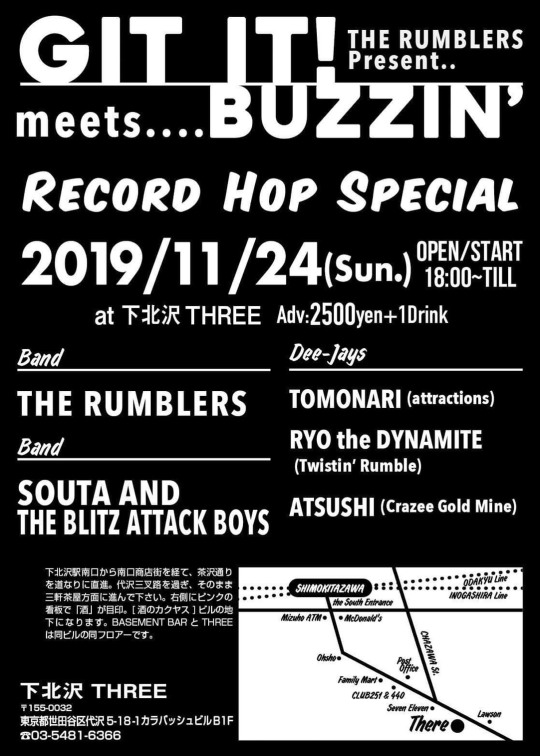
25 Mon
p/am
open/start 20pm
LIVE
Haruko MADACHI(The Wisely Bruthers)
℃-want you!
OCHA∞ME
Dreamcast
DJ
松田"chabe"岳二
福田俊介
Zooey loomer 1979
COPA
Sharpness
朔子(from merimeriyeah)
p/am
FOOD
つづみっこ

26 Tue
Rhyming Slang pre. "Kill Yr Idols" at 下北沢THREE
open 18:30 start 19:00
adv:2000yen/door:2500yen (+1drink)
Live:
Xingfoo&Roy (Singapore)
Bug
BISING
moreru
Sans Visage

27 Wed
SUGAR FACTORY X
20:00-23:00
¥1000+1D
Yodocolts
Three Ring Circus
guest act BurnQue
food フィリピン料理 「ぷーさん」

28 Thu
『pleasant vol.2』
OPEN / START 18:00 / 18:30
ADV / DAY ¥2000 / ¥2500
出演
窓際
Foods
Jan flu
The mellows
Tomato Ketchup Boys

29 Fri
PLANET DUDE 7th Year Anniversary
*Admission ¥2,500(includes one drink). *Entirely non smoking event. (Smoking section is in the corridor) *Kids friendly event.(under 12 no change)
6:30pm Doors open
6:40pm - 7pm 中川一郎 akaAmbient Samurai 7:10pm - 7:35pm Comets and satellites 7:45pm - 8:15pm The Applepie 8:25pm - 8:55pm Slow Wolves Club 9:05pm - 9:50pm Mini Miracles 10:30pm Doors close

30 Sat
Live Time
Here Come The Nice
18時OPEN&DJ START
わしとマチ
ゴールデンシルバーズ
ビフォアーズ
台風クラブ
DJ
ちょっかん (Create Actions)
矢島和義 (ココナッツディスク吉祥寺店)
neco (Here Come The Nice)
予約方法
HCTNにメール hctn2016 @ gmail . com タイトル→11/30前売予約 お名前(カタカナ)/枚数/目当ての出演者 を書いて送信
THREEにメール ticket3 @ toos. co. jp 日時/公演名/お名前/枚数 を書いて送信
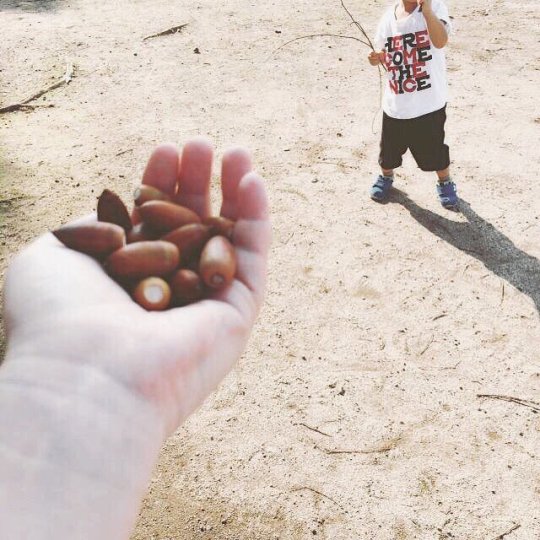
Club Time
Some Song Teachers
24:00star
t¥2000 (with 1D
)Hashman deejay
Andry
Adolphe
5ive
Drunken Stein
Albert Kohein
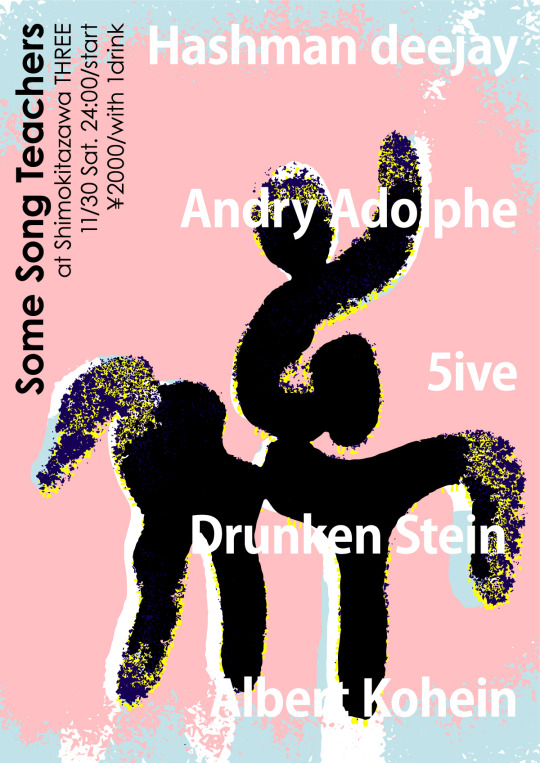
1 note
·
View note
Text
Moiramgthem's art of hand-knitted shoes earns her Padmashree
Mukutmoni Moirangthem of Kakching was compelled by poverty to knit shoes for her daughter, but after 30 years, her skills have led to both domestic and foreign markets for her products. She received the Padmashree in 2022 for her artwork in celebration of her entrepreneurial spirit and work to empower impoverished women.
Moirangthem claimed that she started knitting shoe uppers more than 30 years ago since she couldn't afford to buy new shoes for her daughter who was in school. "Like other women in the area I used to knit woolen socks and mufflers at home for my three children whenever I got time after working in the paddy fields during the day," said the 64-year-old from Kakching. "I was unable to buy shoes for my school going daughter as I had no money then and had to constantly repair them. So I removed the shoe upper and substituted it with a hand knitted one I made with wool left after knitting mufflers and socks, " said Moirangthem, who was married off by her widowed mother when she was barely 16.
A teacher at the school was intrigued by the invention and ordered a pair for her own daughter. "This is how it all began," said Moirangthem. She initially relied on a non-Manipuri individual in Kakching town for assistance as she cut the soles of the shoes using basic hand held tools. Army officers stationed there on patrol noticed her hand knitted shoes. "The Army men expressed surprise at my product and some of them even purchased a few pairs. They later came back to order for more. This is the way my hand knitted shoes first made their way outside Manipur," she said.
Having gained confidence, she founded her own business, Mukta Shoes Industry, and displayed her hand-knit goods in a trade expo in Imphal. "My shoes were a big hit in Imphal. My shoes then travelled to a fair at the Pragati Maidan in New Delhi in 1997 where I sold 1500 pairs in only five days," she said. Now Moirangthem imports soles from Kolkata for her hand knitted shoes. Wool is purchased locally, and the majority of the yarn used to sew the shoes comes from distant Ludhiana in Punjab.
Through middlemen located in Delhi, orders are also received from nations including Japan, Russia, Singapore, and Dubai. Delhi, Rajasthan, and Bengal are other places where her shoes have found buyers. "Currently around 20 people, mostly women work for me. But there are many times when I am unable to meet the demands due to lack of resources," she said.
They hand knit the uppers of shoes for toddlers, adults, and women, and an adult-size pair of shoes typically takes four days to make. Prices range from Rs 500 to Rs 2000, while wages for workers are roughly Rs 5000 per month. "Stockpiles of shoes are required to meet any random orders from online stores. We have to be ready for different designs, sizes and colours if we wish to grow. But financial constraints and lack of resources have hampered our endeavours" she said.
Fears have also emerged as a result of her success. "My biggest fear is that large firms with better resources will one day copy and produce these woolen shoes en-masse and sale them at cheap rates. In the process my creation will be lost," she said. Moirangthem said she would like her craft to be patented but seemed unaware of the procedure."
“If my craft is patented then at least the name of Manipur state and my hometown Kakching will forever remain connected with hand knitted woolen shoes." She also wants to establish a training facility where young people can learn the trade and work for themselves. "One day a time will come when I won't be able to make these footwears. Unless a proper mechanism is created, the craft will be eventually lost. The thought breaks my heart," Moirangthem added.

#india#womenswear#womensfootwear#shoestagram#fashion#lifestyle#style#repost#explore#explorepage#new#instagram#instagood#like4like#followback
0 notes
Photo

New Post has been published on https://primorcoin.com/indian-travel-company-makemytrip-to-launch-nft-series-report/
Indian Travel Company MakeMyTrip to Launch NFT Series: Report

MakeMyTrip reportedly jumped on the crypto bandwagon by releasing a limited edition non-fungible token series. The digital collectibles will feature Indian landscapes as the proceeds from the sales will promote the local tourism sector.
Joining the NFT Universe
According to a recent coverage by Business Today, the Indian travel organization MakeMyTrip is the latest entity to enter the NFT realm. The company launched non-fungible tokens that celebrate the diversity of India’s nature in areas like Goa, Kashmir, Kerala, Rajasthan, Orissa, and more. The artwork features not only the popular sightseeings of the country but also numerous other sites, which are still unexplored.
The NFT series is minted on the Polygon blockchain and is designed using Al Generative Adversarial Networks (GANs). Individuals can purchase the collectibles through MakeMyTrip’s website or via an application. Prices start from $195 per single NFT. Commenting on the initiative was Sunil Suresh – Group Chief Marketing Officer of the company:
“We are offering travel enthusiasts a never-before chance to be owners of this beauty in the digital domain.”
Founded in 2000, MakeMyTrip is among the largest travel entities in India. It provides online services, including airline tickets, domestic and international holiday packages, hotel reservations, transportation tickets, and car hire. Its headquarter is in Gurugram, Haryana. However, the firm has numerous international offices in New York, Dubai, Phuket, Bangkok, Singapore, and Kuala Lumpur.
MakeMyTrip is also a publicly-traded company, trading on NASDAQ under the ticker symbol MMYT. At the moment of writing these lines, a single share costs around $21.
Ukraine’s NFT Endeavors
Apart from entering the travel industry and many other markets, cryptocurrencies and non-fungible tokens have become a key feature in the war between Russia and Ukraine. While numerous individuals and companies sent donations in digital assets to aid the latter’s defense, others released NFT collections.
Such is the example with the boxing legend Wladimir Klitschko. To launch the initiative, the former heavyweight champion partnered with the artist WhIsBe. “Dr. Steelhammer” (as his nickname is) vowed to donate all funds from the sales directly to Ukraine in its current defense against the Russian forces.
“Art can be beautiful on many levels when used to serve humanity,” Klitschko stated.
In addition, the Ukrainian government revealed intentions to depict its fight against Russia in the form of non-fungible tokens. Alex Bornyakov – Deputy Minister of Digital Transformation – said the artwork will act “like a museum of the Russian-Ukrainian war.” He promised that the government will use the generated profits from the endeavor to buy defense equipment for the soldiers and fund media activities.
SPECIAL OFFER (Sponsored) Binance Free $100 (Exclusive): Use this link to register and receive $100 free and 10% off fees on Binance Futures first month (terms).
PrimeXBT Special Offer: Use this link to register & enter POTATO50 code to receive up to $7,000 on your deposits.
Source link
#Binance #BNB #CryptoExchange #DEFI #DEFINews #NFT #NFTNews
#Binance#BNB#CryptoExchange#DEFI#DEFINews#NFT#NFTNews#Crypto Exchange#Cryptocurrency Exchange#CryptoPress#decentralized exchange#NFT News
0 notes
Link
Singapore has long tried to combat its reputation as a cultural desert. An influx of state funding in the past two decades has almost singlehandedly cultivated an art scene from the top down, as the city-state has tried to locate itself as a premier destination for art in Southeast Asia and beyond. But in a bombshell interview with the South China Morning Post in January this year, Lorenzo Rudolf, the founder and president of Art Stage Singapore – long hailed as the flagship Southeast Asian contemporary arts fair – delivered a shockingly sobering assessment of the arts scene in the city-state.
“Strong economic growth has led to many new galleries and private museums opening in the Philippines, Indonesia and Thailand. Everywhere, everywhere, the art scene booms. The only place we have stagnation is Singapore,” he told the Hong Kong-based newspaper. “If the market doesn’t grow, then I will have to reflect on what I do. I sure won’t be sitting here until the end.”
And Rudolf echoed those sentiments to Southeast Asia Globe last month.
“Everybody truly thought that Singapore [could] become the centre of this entire region,” he said. “Singapore mainly concentrated on its own art scene, while in the countries around Singapore, art scenes massively grew due to economic growth and, often consequently, social liberalisation. The private sectors and collectors began to take over responsibilities to support and develop the growth of the scenes… As a result, we have this situation today that there is a danger of these art scenes around Singapore becoming more attractive internationally… We see now that it is harder to build up culture than infrastructure.”
Art Stage Singapore brings together industry leaders along with top international talent and galleries in a bid to place the regional art scene on a global stage. Launched in 2011, it became Asia’s answer to Art Basel, also founded by Rudolf and considered by some to be the premier art fair series in the world. In 2013, leveraging the event’s success, state agencies the Singapore Tourism Board (STB) and the Economic Development Board (EDB) built Singapore Art Week around Art Stage, with the latter seen as a centrepiece for the city-state’s art scene.
But with the number of exhibitors at the fair having halved since 2016 – 84 took part this year, compared to 131 in 2017 and 170 in 2016 – coupled with Rudolf’s downbeat outlook, the city-state’s position as a regional arts hub is on rocky ground. Beyond Art Stage, the Singapore Contemporary Art Show was discontinued this year after only two editions, and the Affordable Art Fair was scaled back from two shows per year to only one.
Since the turn of the century, Singapore has tried to position itself as a top cultural destination in Southeast Asia. The Renaissance City Plan of 2000 laid out a long-term scheme for massive development of the arts, with the state pouring millions into public art museums, non-profit art spaces, residency programmes and research centres to try to shape a market in which there is little private investment and where arts appreciation is known to be relatively low. According to the National Arts Council (NAC), the state’s investment was $412.8m in 2016, which equals about 85% of all investment in the arts that year.
Rudolf said that despite Art Stage’s potential back in 2011, the scene’s government-led development has meant that it has grown differently to its neighbours, which poses unique challenges.
“Singapore’s art scene is not organic,” he said. “A successfully sustainable, functioning art scene can only grow from the bottom up. Never in history have you seen an art scene which has been built from the top down functioning.”
Mark Saunderson, co-founder and director of the Singapore Contemporary Art Show, a branch of the Asia Contemporary Art Show based in Hong Kong, agreed. “The National Arts Council cultivates artists in Singapore. But when you look at the depth of art history, skill, craft, technical aspects of art, there’s huge depth in Indonesia, Thailand, Cambodia even,” he said. “I think the challenge with the arts in Singapore [is that] this is a process, and you have to involve people in art who are obviously interested, but engage with them and develop that interest over time.”
The city-state’s relative lack of art history is one of the gaps that were intended to be plugged with the opening of the National Gallery Singapore in 2015. A sprawling, $370m state-funded project, the gallery houses the world’s largest collection of modern art from Southeast Asia, and it was hoped it would cement Singapore’s place as an arts hub thanks to its regional focus. “This is the first time this is happening anywhere in the region: a Southeast Asian collection to tell the regional story of art,” said gallery director Eugene Tan.
“This understanding of art history, which was previously absent, is something we are beginning to introduce to the public.”
Saunderson linked the closing of the Singapore Contemporary Art Show and some of Art Stage’s problems to a downturn in the economy, and while he disagreed with Rudolf’s assessment that the art scene was stagnating, he said that the key to a successful art scene in the city-state was to understand the uniqueness of Singapore’s young art market and the nascent tastes of its audience – and to let it evolve naturally over time.
“When you’re an art fair organiser, as we are in Hong Kong, we are very, very conscious in terms of where we select our artwork – [it should] appeal to the maturity, the taste, the diversity [of the audience],” said Saunderson. “The key to nurturing, developing and growing the market is to take stock of where the market is at… It’s a hard thing to do, as Singapore has discovered. It’s a hard thing to jumpstart top down.”
With growing competition from emerging regional markets and events such as Art Fair Philippines and the recently established Art Stage Jakarta, not to mention the powerhouse that is Hong Kong – the largest art market in Asia – some fear that Singapore is becoming increasingly irrelevant on a global stage and that attracting non-local artists and galleries into its borders has become more of a challenge. The sky-high costs of renting studio and gallery space mean that setting up in cheaper alternatives in other countries can be more appealing.
Also, according to Singaporean filmmaker and visual artist Sherman Ong, the Singaporean focus on economics has helped keep art appreciation in its infancy. A 2016 statistic from the NAC showed that only four in ten Singaporeans would say they are interested in the arts. “Singapore has always been a very pragmatic place – it’s a very commercial city,” said Ong. “The population still does not see how arts benefit them materially. Of course, the government is working very hard to change that, and you can see these changes, but it still needs time.”
Ong sees a contradiction between the government’s agenda and the needs of local artists, which can result in a restrictive space for meaningful artistic creation. “What is needed for the arts is different from what the government wants. The government wants to create Singapore as an international hub for Southeast Asian art,” he said. “Sometimes art also has to have its own standing… Because once it’s tied to a certain source of funding then events have to, in a way, support the larger objectives of nation building.”
This is intimately linked to what Ong considers the imperative of combatting a “bland” art scene that comes out of a setting where artists may – at least subconsciously – stay away from controversial or political subjects. “I think that’s kind of a survival mechanism, because the funding always comes from the centre,” he said. “It’s not to say that artists need to do work that criticises the centre – it’s actually to create an environment where the artist is free to think and go beyond… to create work that is not so restricted.”
Jasdeep Sandhu, gallery director of Singapore’s Gajah Gallery, which has exhibited at all eight editions of Art Stage, disagrees with the notion that artistic censorship is still an issue in Singapore. “That’s actually rubbish,” he said. “I had my gallery for about 15 years at the ministry building and I had full homosexual scenes displayed on my walls. For months. And I’m 30 metres from a minister’s chair. No one once told me to take it down. They don’t want to know. This whole censorship thing is ridiculous… It’s a headache for them to fill out all these papers and answer to media and to grumbling artists.”
Despite feeling the strain of low sales, Sandhu is hopeful about Art Stage Singapore’s future and thinks that the shrinking number of exhibitors was inevitable because enormously high costs for galleries mean that the city-state was never going to be able to continue to support a fair of that size. “They’re a bit too premature for their time… At the end of Art Stage 2018 I was actually very optimistic, and I hope that they [learn from] having an 80- to 100-gallery art fair,” he said. “If they’ve spent a few years building it up it’ll be a shame to give away the initiative.”
Sandhu also feels that, despite a growing number of complaints, the city-state’s art scene has come a long way. “I think the government is doing a fantastic job… No country around Southeast Asia has put that much effort into creating museums,” he said. “If you look at 20 years ago, a Singaporean artist would be hard pressed to sell at $2,000. And you have young guys at 30 years old selling at $30,000 right now. That’s a lot. That’s what I call real progress.”
Beyond Singaporean borders, Vietnamese-American artist Richard Streitmatter-Tran, who is based in Ho Chi Minh City, feels that as an artist he has only benefited from Singapore’s plan to position itself as a hub for Southeast Asian culture. “Coming from someone who is not Singaporean, much of my early career was supported by Singapore. And it still continues to be,” he said. “I’m glad to be involved in a lot of the initiatives that Singapore has because I find them interesting. Do I find Singapore itself exciting? I don’t know… I don’t know what it can do to combat its image of being the most boring country in the world.”
It appears that the futures of Art Stage Singapore and of the city-state itself as an arts hub are intrinsically linked. While the winding down of the country’s showcase arts event would be a hammer blow, it seems unlikely that it would sound the death knell for the arts scene in general given the level of investment ploughed into the project thus far. What is more certain, though, is that there is no easy path ahead for Singapore.
“Everybody is actually catching up. So eventually I think we will have to come to another equilibrium. I think it’s now a transition. [It] is not clear how Singapore can navigate the situation,” said Ong.
And while Rudolf was bullish over this year’s Art Stage Singapore, describing it as “surely still the biggest and most important art fair in Southeast Asia”, he is in agreement that the city-state’s neighbours are finding their place on the regional stage.
“The only way for Singapore to be successful in the future is to make all efforts to collaborate among all local players and to seriously focus on the cultural aspects of art,” he said. “Art is not a merchandise.”
21 notes
·
View notes
Text
Contemporary Artist and his Artwork
Andres Barrioquinto: “The Back of Love” at the León Gallery Magnificent September Auction 2019, at P12.9 million
Andres Barrioquinto is a Filipino artist that creates surrealistic portraits with Japanese art style and patterns. He was born in Manila, Philippines, on April 6, 1975, but spent his teenage years in Hong Kong, where he attended Royden House School. In the year 2000, he returned to Manila to study Fine Arts with a focus on Painting at the University of Santo Tomas. In the Philippines, he had 19 solo exhibits and five in Singapore. The Singapore Art Museum houses several of his works.
Says one collector, “You need to hobnob, go to recitals and children’s parties, show up at the barbecues and blessings.” Another art lover sighed, “Oh, the lengths we must take to get our hands on a coveted artwork!”
Including the Hybridity, he use the butterflies and flowers to create a clothe. Hybridity is another element and principles used by contemporary artist in their artworks.
-Disclaimer: Photo not mine. This blog is for educational purposes.-

0 notes
Text
ELECTRIC STACKER IN SINGAPORE
Hopper is the subsidiary brand for fabric handling Equipments of Marshell electric powered car enterprise, with 4 factories placed in Zhaoqing, Shanghai and in Anhui, owns 290,942 rectangular meters workshops, over one hundred fifty experienced engineers and extra than 2000 expert humans. electric stackers are sold to everywhere in the international, manufactures serial varieties of materials managing machines consist of hand pallet truck, electric powered pallet truck, electric powered powered pallet stacker, electric stacker, electric tractor, electric powered counterbalanced forklift truck, and so on. extensively used in production factories, warehouse , stations, airports, grocery store and different fields. all of us automobile is one hundred% tested. IQC, % and QA strategies are hired to check substances, check products at the assembly traces, and evaluate objects previous to transport. to manipulate the low fee, we also make many additives in our production unit, together with batteries, charger, gearbox, chassis, mast, fork, painting, tooling, etc.
All collection of Hopper forklift vans are obtained with the CE, ISO09001,ISO14001 certification and function supplied with "countrywide excessive-tech business enterprise" and "countrywide benchmark employer of product and service excellent and integrity" and lots of various honorary titles. Hopper, no longer simplest meet not unusual requirements, but can also meet your specific types or specifications, with strong R&D organization, we are very sturdy in customization. And offering spare additives, and after-carrier to distant places. We handiest have one worldwide, we ought to shield it, Hopper want to artwork collectively with sincerely every person to build up a easy and green and beautiful world.
ELECTRIC POWERED STACKER
Electric powered stacker is top notch used with pallet racking. This aggregate will provide you with are ground place multiplier with out troubles. Do observe that you’ll require open primarily based pallets to apply electric stackers due to the fact underneath the forks that raise the pallets, there are too extra “legs” called the straddle to help the stacker stand at the equal time as lifting your pallets. observe below for added records on open based completely pallets. in case your objects aren't stacked already stacked on open based totally pallets you can want to recall getting attain vehicles so that you can boost the pallet as it's far. electric powered powered stacker is splendid used with pallet racking. This aggregate will provide you with are ground vicinity multiplier without problems. Do be aware which you’ll require open based totally pallets to use electric powered stackers due to the fact underneath the forks that carry the pallets, there are too more “legs” referred to as the straddle to assist the stacker stand whilst lifting your pallets. read below for extra data on open based pallets. if your objects are not stacked already stacked on open primarily based pallets you would probable need to take into account getting acquire trucks so you can enhance the pallet as it's far.
CAPACITIES
electric powered stackers are to be had in numerous capacities like 1T/2M (Max of 1000kg, Max of 2M peak). What it manner is the capability to carry 1000kg off the floor to an inexpensive pinnacle like 30cm. Any further up, the electric stacker may additionally have decreased lifting capacity due to the extension of the mast. So, do not assume to carry 1000kg of load as an awful lot as 2m as stated on the producing facility’s specification of 1T/2M. as an alternative, what it manner is your electric powered stacker can bring a most of 1T off the floor. At 2M you can nicely anticipate that the stacker can deliver about 4 hundred to 500kg of shipment. There may be a comparable chart like the one underneath on the electric stacker to help you decide the max load when the usage of your electric stacker.
0 notes
Text
Right People, Wrong Timing: DEFINITELY NOT SINGAPOREAN: A Conversation with Jennifer Teo and Woon Tien Wei on p-10 (Singapore, 2004-2008)
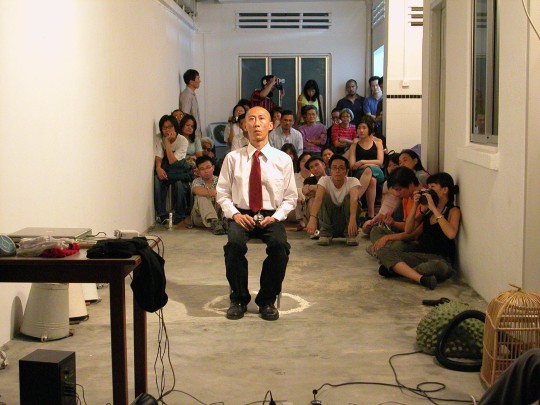
p-10 was a curatorial collective founded in 2004 by Charles Lim, Lim Kok Boon, Lee Sze-Chin, Jennifer Teo, and Woon Tien Wei. In 2008, p-10 disbanded and the different members have since focused on other things. The group organized numerous exhibitions and talks in their space along Perumal Rd. and curated Koh Nguang How’s “Errata” exhibition. p-10 was also instrumental during the early days of Post-Museum, an initiative which was subsequently managed by Jennifer and Tien. In this conversation, we discuss with Jennifer and Tien curatorial practices in mid-2000s Singapore, the phenomena of biennialization, collectivism, and issues surrounding archiving.
*****
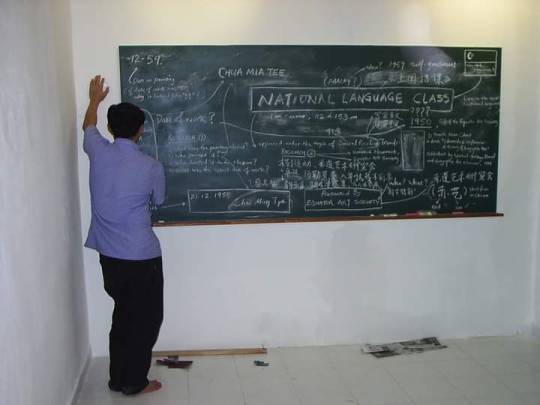
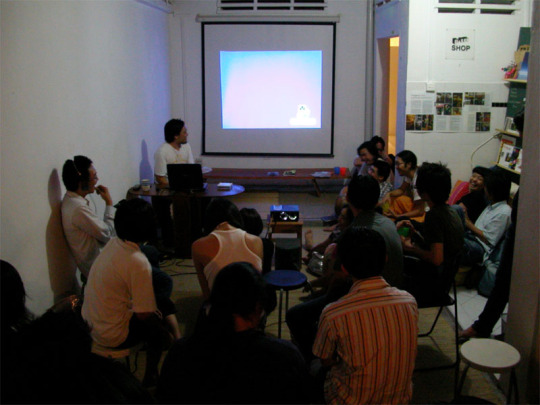
BEGINNINGS
Woon Tien Wei (WTW): p-10 started after [Lim Kok Boon, Lee Sze-Chin, Charles Lim, and I] finished our studies in London and returned to Singapore. The ground floor unit in the building where Kok Boon and Sze-Chin’s studios were was available so we rented it.
At first, p-10 included Jennifer [Teo], Charles, Kok Boon, Sze-Chin, and myself. Rather than open another studio, we decided to form a curatorial team because we thought that maybe curators can do something different from what artists were doing back then.
Jennifer Teo (JT): That was in 2004 which was also the start of the Renaissance City Plan (RCP), the cultural policy of the National Arts Council (NAC), which we thought was too focused on just creating and having a lot of exhibitions. We thought that the government and the artists were focused on doing a lot of exhibitions — the NAC was giving out grants for exhibitions and the focus was on producing those. Nobody really took the time to look at the exhibitions and artworks seriously.
As a curatorial team, we wanted to slow it down and form some kind of discourse. Even artist talks weren't done then. We were basically interested in looking at the issues and practices surrounding the production of art. Everyone in the team had their own artistic practice already so we decided not to focus on our own artwork, but to find other artists and look at their practice.
WTW: I guess we were also thinking about other people that were regional like Project 304 or About Café in Bangkok. I think Plastique Kinetic Worms (PKW) really introduced us to a lot of this because of their relationship with some of the networks in Southeast Asia.
Merv Espina (ME): You mentioned before that you both were involved with The Artists Village (TAV) before p-10. Can you also describe that time period leading up to the creation of p-10?
JT: We were active with TAV from around 2000 to maybe 2002 so there wasn’t much overlap. We were still TAV members but we weren’t really active then.
WTW: I think it was also a different sense of collectivity or mode of working. Actually, maybe most of us were not curatorial but I think, strategically, we just felt that the curatorial had more power than the artistic because curators were more in-between in those days.
JT: Independent curating wasn’t a profession or even a thing yet in Singapore.
Sau Bin Yap (SBY): Were there any curators, art historians, or researchers operating in Singapore at that time?
WTW: I think if there were, they were probably in the museums. You would think that curators function like art historians but in hindsight I’m not sure if they were. I doubt it. I think today we can also think that the art historian does not need to be curatorial. They are also quite different. In fact, I think the curatorial now has its own space as opposed to the art historical. Maybe in those days you would think we imagined them to be very close but we actually imagined that we were not that close to art history or making art history.
JT: I think it was also like mutual aid or a self-help thing in the late ‘90s when artists were creating exhibitions and doing things together. We weren't trying to be professional curators.
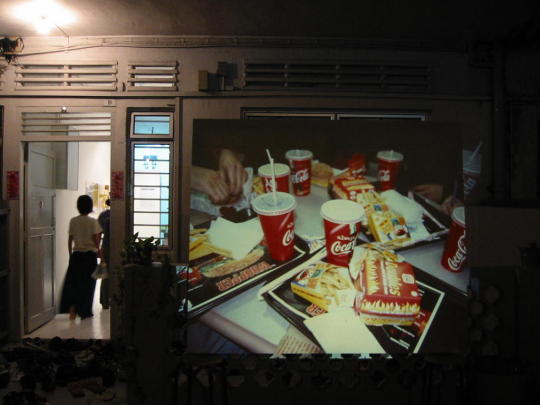
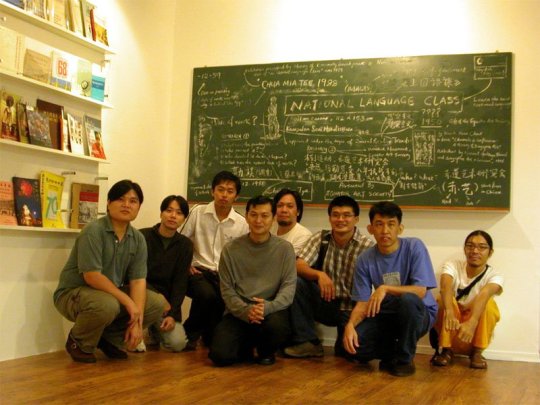
10 PERUMAL RD.
ME: Was the curatorial collective already formed before you found the space?
WTW: We found the space first.
ME: How did you find this space in this residential area?
JT: Colin Reaney and Karee Dahl, an Australian artist couple who were teaching at the NIE (National Institute of Education), were the first to rent a unit there. They told us there were other units available so people started going to have a look. This was in Little India so it was really convenient and it wasn't that expensive.
So then at least five other flats were taken up. Later on, we collaborated to have this open studio thing where the different people opened up their spaces in the building and around Little India. It was really like a small community then.
ME: How did you guys support p-10 and yourselves living-wise?
WTW: We had some grants for the projects we were working on.
JT: Some of us were working like the two teachers, [Kok Boon and Sze-Chin].
WTW: Some of us were alright financially and so we didn’t have some of the financial pressure and I think it is important to acknowledge that. I felt that we are trying to figure out what to do in the art scene and figure if what p-10 was doing could be sustainable financially.
JT: Also, it was like the start of your careers after coming back so everyone was trying to figure out their own place in Singapore and what they could do. At the same time, I think you guys said that you missed these kinds of places where you used to hang out in the UK?
WTW: Right. I think we wanted something like studios which are also not always very common or trendy, but maybe during that time it was a little bit trendier. I definitely think that that culture of studios is quite British.
JT: Definitely not Singaporean, at that time at least.
WTW: I'm not sure exactly. Even today, I think the whole idea of studios is not very popular. People find it really difficult to get it.
SBY: It's interesting because I think that studio culture is not only about making art, but also the discussions and meetings that may lead to organizing or even curating.
WTW: Also, to just think about the modes of production needed to fit something. I mean, to have something as big as the RAP house in Kuala Lumpur would be completely unimaginable in Singapore. But, at a certain point in time, it was affordable. Definitely before 2000, you could imagine something like that. There was also this idea that Singapore could never be as free as KL.
JT: Or Manila I think.
SBY: That's interesting. I remember when you guys came to KL and visited RAP, you said that it actually sort of reminded you of [Ulu] Sembawang and TAV.
WTW: Yeah, but we never really went there so we were just imagining it.
SBY: We haven't been there as well, so we were all imagining. So, there is actually a rustic nostalgia of TAV at Sembawang.
WTW: Yeah. But we were not sure whether you could do things outside. That means, in order to have an exhibition, you have to be formal. I think now it's a lot more free; you could just do anything anywhere.
JT: No, I think we just see it that way but maybe for younger people they don't.
WTW: Okay, it’s subjective. But let's see. I think people still think that you need some officialness.
JT: I think now even more so.
WTW: But I think that's why we didn't know whether we were allowed to do that so everything was by-appointment then. We weren't sure whether we could actually be open. It wasn't clear.
JT: Well, the place that we rented was actually residential so officially, we were not supposed to hold events there.
ME: How did that work considering you got grants?
JT: Yeah, but they didn't really...
WTW: I don't know why they allowed it?
JT: Maybe now they wouldn't anymore.
WTW: I think they were more relaxed then. We just weren’t sure and we didn’t know how to check. We weren’t as flexible as we are now.
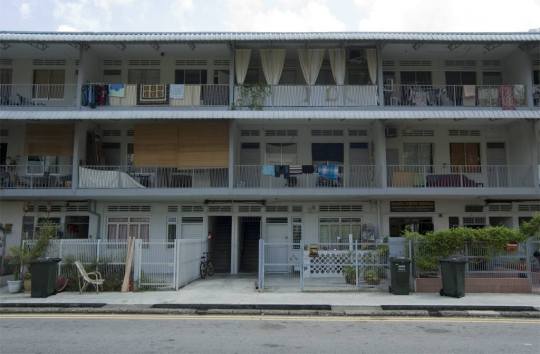
FIRST IMPRESSIONS
SBY: In 2003, when p-10 visited RAP, I remember thinking you guys were serious researchers because you had mics and recorders. That left quite an impression that you were sort of doing this regional research and networking and it’s interesting how it’s connected to your positioning as a curatorial outfit. I’m wondering what spurred you or what informed your consciousness? What kind of discussions did you have that led to the creation of p-10?
WTW: I think it was mainly a way of reframing the situation and changing some of the context because when we started, it was not a trend to give talks and reshow your work. If I'm not wrong, during that time, exhibitions did not last for more than two weeks.
I think there were a lot of things that we were figuring out but also, I guess it was, discursively or strategically, a way to start rethinking what we could be doing. Things like TAV’s work about going back to Bali were not common because looking back historically wasn’t popular then.
But I think that's the only thing that was very different then. Now, everybody wants to go back and research. I think there's also a tendency to change, but I'm not sure how much of it is driven by this whole biennialization because it is also a privileging of something intelligent.
One of the things that I feel is valuable talking about when it comes to regional consciousness is how it's also pretty much dominated by the biennialization of the artworld. That seems to be the driving force.
ME: It seems that p-10 had this regional awareness and that it was like an advocacy project where artists advocated to take on a curatorial role to highlight certain artists and practices.
WTW: Yeah. Because, back then, let's say I have a show at The Substation, it will last one week and one would never show the works again because it is “old work.” Just one week. Who can see your show? Nobody. So, it was very [modernist] in the sense that...
JT: You had to be productive and creative. It was also the time where it was cool to say that you're a full-time artist and people would look down on those who are not full-time artists.
WTW: Just a side note, when we were in the UK, David Medalla was an extremely important person to us. Even before I met him, I was already really interested in what he was doing. I guess his generosity and TAV or [Tang] Da Wu’s kind of collectivity were really important for us because, in a sense, there wasn’t this kind of modernity involved? The modern as in like “the genius.” There was a different kind of value structure and sense of openness within that sense of collectivity which I thought was interesting for me. I was interested in how people can come together, do something, and be influenced by each other and then just go and do their own thing. There was no sense of something permanent that needed to go on, but it was a confluence of relationships.
David taught me a lot actually. I think he played a big role in why London became an interesting place for me. I don’t think London is a place that makes people feel at home, but David did. I think that generosity is something that, in contemporary art writing, we don’t really talk about.
JT: A bit more now. Generosity, care, hospitality...
THE “ERRATA” PROJECT
JT: Our first show was Lee Wen’s “Unframed¬7” and that had to do with this policy regarding grant applications. He was like, “No, we just want to do this,” so we very quickly had an exhibition, a performance, and several discussions in seven days. We then moved on to quite a few bigger projects one of which was Koh Nguang How’s “Errata.”
WTW: For us, it was a really different way of curating because we were contextualizing Koh’s practice. For the longest time, people didn’t understand Koh’s practice fully. He was just very historical but nobody could really pinpoint what it was exactly. After he was invited to the [2011] Singapore Biennale, his practice really shifted a lot but I think it developed from the “Errata” project.
JT: “Errata” also revived attention towards a whole generation of artists, the Equator Art Society (EAS).
WTW: “Errata” was about Chua Mia Tee’s painting “National Language Class” that had been wrongly dated in Kwok Kian Chow’s book Channels & Confluences: A History of Singapore Art (1996). It touched on that whole Cold War period when, here in Singapore and Malaysia, the British were arresting anyone they suspected to be communists. The project was interested in unpacking the suggestion that there was some kind of leftist link with the EAS.
JT: Also, the EAS was kind of left out or forgotten so “Errata” actually brought them back in a way.
WTW: People were afraid of being associated with the left or being called “communist” or “Marxist.”
JT: At the time, the museums wouldn't have been able to do this project. They wouldn't have wanted to work with Koh.
WTW: There was one time that Koh, Chua Mia Tee, and Kwok Kian Chow, who was also a museum director, were in the same room talking about this whole thing. It was really obvious that there was nothing more to it; the caption was definitely a mistake. But that caption kind of opens up that lost time.
At the time, I think we weren't very good at researching; it was just research in a very general way and it was driven by what Koh sees as his research.
JT: In “Errata”, what we did was really to complement him.
WTW: And we had to curate him. We had to put him somewhere. It's a particular history that just wouldn't have resonated anywhere else. I mean, you would not have known this book. I don’t think it was a hot seller but it’s completely sold out. No more second copies. It’s completely colloquial; the national collection is based roughly on the same script.
ME: Official narrative.
WTW: Yeah, I thought it made sense. What Kian Chow did was to put concepts in time and had the concepts propel the movements. So, it made sense if they were just concepts at the same time; just different people who felt different about things. As a structure, it was pretty sound. It’s just that nobody was interested in reading about the “past.” Which contemporary artist would want to read about art from the past published in 1996? Nobody.
Many would have difficulty connecting with Liu Kang or Nanyang Style in the search for the contemporary. Back then, if I painted in Nanyang Style, I feel that people would laugh at it because it was not contemporary. That’s what I felt was driving some of the interest in the project, that it was restoration of something no one was looking at.
JT: For the artists then, it was a very intentional break away from the past, to something new.
WTW: Yeah. Because I think in Singapore, it was very important for people to be contemporary and that meant you have no past in a way.
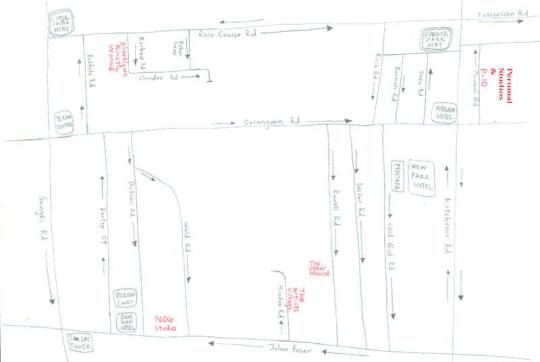
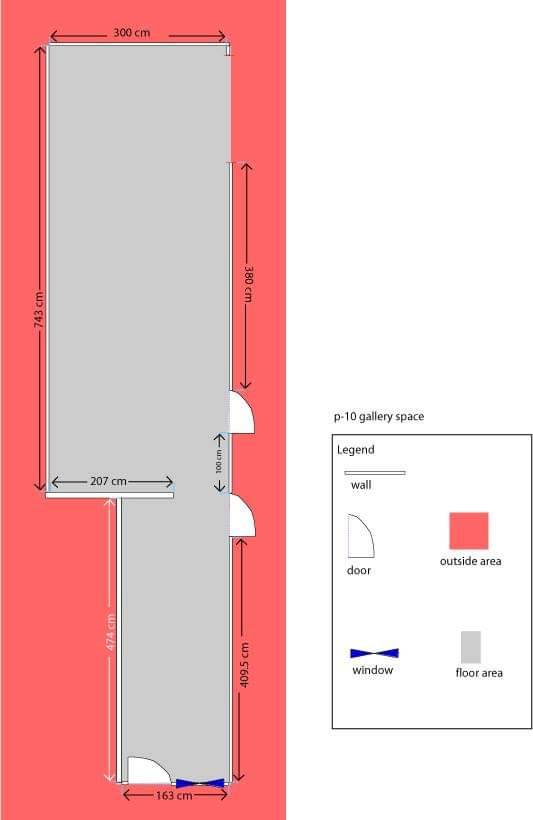
POST-MUSEUM AND THE END OF P-10
ME: How did the idea of Post-Museum come about? Because it was founded in 2007 when p-10 was still around.
JT: The father of someone I know had a property in Little India and he asked whether we would be interested to move p-10 to this bigger space.
We thought about it and we decided that if we were to move, it would no longer be the same p-10 anymore because we would have to pay a lot more rent so we needed to have a proper income and since the space was bigger, we would also have to do more. So, it kind of came about because someone offered us a space rather than us thinking of doing something more “proper.”
We decided to run it as a business and that became a problem for the two teachers because legally, as civil servants, they are not allowed to be co-owners of private businesses.
ME: Since p-10 closed in 2008, it seems that it overlapped with Post-Museum for about a year. What were the circumstances that led to p-10’s closing? Did it lose its space?
JT: By that time, Charles left and [Cheong] Kah Kit joined. The two teachers were getting too busy with school and Kit was planning to do his master's abroad so it was just the timing. We thought maybe we should end because everyone wanted to go and do their own thing. We didn't think of changing the team. None of us were really trying to hang onto it so it just felt right to end there.
Our last project as p-10 was when we participated in the Asia Art Triennial in Manchester in early 2008. It was a huge independent initiative that was supported by the government there, and we worked with Kwong [Lee] from Castlefield Gallery. After that, we stopped p-10 because we were also getting really busy with Post-Museum.
WTW: But we kept the space for a while.
JT: Yeah. We rented it to other people
WTW: But it was very difficult to maintain financially.
JT: We still used the p-10 space for residencies.
ME: p-10 positioned itself as a curatorial rather than artist collective and, in Tien's dissertation, he distinguished p-10 from Post-Museum by saying that it's a “fixed team working in the field of fine arts,” whereas Post-Museum is like a “networked collective” engaged in the fields of cultural work, education, etc. We were wondering if this eventual shift or expansion was a result of your experiences in p-10?
JT: When we were doing p-10, we already felt that it was too insular and that we were only talking to art people. So, with Post-Museum, we intentionally wanted to open it up to everyone. And then also, as I mentioned, because of the space and its whole set-up, we had to also do more things, include more people, and really try to work out certain ideas we had about what participation was and also how art could change the world. I think we all had some kind of idea, but we never really tried it on such a large scale.
At that time, The Substation was the only place where people could gather and that was where you could meet different artists and musicians. We wanted that sort of atmosphere where people could just come and things could happen. In many ways, we were thinking of it as an open platform. The attitude was really quite open and we didn’t want to fix what Post-Museum as a space was; we wanted it to be decided together with everyone who came and visited. It was meant to be a completely different thing from p-10.
WTW: When we started, Post-Museum was trying to be less art and more social. I think even with p-10, we wanted to think that art could shape and change the world but, if you really work in the artworld, that’s something you actually do and see less of. That was something we felt and we weren’t sure why it wasn’t happening but we knew it was not happening. So, with Post-Museum, I think that’s why we decided to just open it up to anybody who’s interested in doing something.
JT: We were much more interested in other people as participants and not just as audience, so it was quite different. It was an intentional change in direction.
WTW: Honestly, I thought it would be different, but I didn't expect it to be so different. I'm not saying that art doesn't really have a way of opening itself up; art does have a way of being very flexible and fluid, but it doesn't have access to certain networks which actually takes time to build. For the first few years, we felt that Post-Museum was mainly different because we had a café. People would hang out and gradually trust each other over time.
JT: A lot of people actually came to eat so it really was a whole new group of people that we never encountered.
WTW: I think that was very important for us and that kind of changed our perspective.
ARCHIVING P-10
ME: Why was p-10's Facebook page started in 2015?
WTW: I think Kah Kit did it.
JT: It's so full of holes because we don't know where the other materials are and it's all over the place. I think Kah Kit just wanted to put what he had there. I guess we're also supposed to put in what we have but we haven't.
ME: There seems to be some investigation or reinvestigation about your own history.
WTW: Maybe it was not so intentional. I think it's just one of those things that you see once in a while, like a very small pet.
I guess it’s just our way of making sense of the archive because I think it’s difficult for us to make time to actually work on it. We have a lot of materials but we just need time to go through it.
JT: But we really haven't been going through it.
WTW: Yeah but we just felt that it was very important to do so. One of the things I always say is that archives are monsters — they consume you and they consume everything around them. Koh is a very good example. He’s half-consumed, a bit like that Naked Lunch thing. But yeah, it’s just impossible for me. I think to even have an archive is an unreasonable request. But, as researchers, we know how valuable it is; it’s just so hard to know when these things become valuable. It’s the most unsexy thing ever.
*****
The online interview took place on 6 September 2020. This interview was edited for length and clarity
*****
Post-Museum is an independent cultural and social space in Singapore which aims to encourage and support a thinking and pro-active community. It is an open platform for examining contemporary life, promoting the arts and connecting people. In addition to their events and projects, they also curate, research and collaborate with a network of social actors and cultural workers.
Images courtesy of p-10: 1. "Unframed¬7" with Lee Wen performing and Juliana Yasin holding the camera, 2004 April 2. Koh Nguang How "Errata" at p-10, 2004 3. Kuala Lumpur collective Rumah Air Panas (RAP) giving a talk during their residency with p10, 23 Aug 2005 4. Exchange 05, slideshow of Lim Kok Boon's food intake for a year; photo by Jennifer Teo, 2005 5. RAP with Koh at Singapore History Museum for another version of "Errata", 2005 6. p-10’s facade, 10 Perumal Building 7. Handdrawn neighbourhood map 8. Floorplan of p-10
More info:
p-10 Singapore Facebook page
https://www.facebook.com/p10sg/
p-10 Blogspot http://p10.blogspot.com/?m=1
June Yap. “Singapore: Censorship, Institutions, and Alternatives.” (March 2016) https://www.researchgate.net/publication/316990701_Singapore_Censorship_Institutions_and_Alternatives
Fang-Tze Hsu. “Escape or Advance: The Politics of Independent Art Spaces in Singapore.” (28 April 2014) http://www.leapleapleap.com/2014/04/escape-or-advance-the-politics-of-independent-art-spaces-in-singapore/
Woon Tien Wei "Arts in a Knowledge-based Economy: Activist Strategies in Singapore's Renaissance." (2012) https://pdfs.semanticscholar.org/48c7/9ae51fc4b9e9db8e1d0f0782b5e13abf0ae2.pdf
The Bali Project, 2001 https://universes.art/en/singapore-biennale/2008/parallel/the-artists-village/08
Unframed¬7 https://m.facebook.com/story.php?story_fbid=10155407713142957&id=624457956
Woon Tien Wei. “Still Here Somehow: Artists and Cultural Activism in Singapore’s Renaissance.” (December 2017) https://www.on-curating.org/issue-35-reader/still-here-somehow-artists-and-cultural-activism-in-singapores-renaissance.html#.X0PVpzURXIU
Post-Museum https://post-museum.org/root/
Georgi Gyton. “The First Ever Asia Art Triennial 2008 Kicks Off In Manchester.” (15 April 2008) https://www.culture24.org.uk/art/art56377
If you can: https://greenpapaya.art/donation
*****

Right People, Wrong Timing (RPWT) is a series of texts on defunct or inactive independent Asian arts initiatives that had crossed paths or ran parallel to Papaya’s own 20-year history. With new posts every Friday from August to December 2020, RPWT is kindly supported through a local grant by the Japan Foundation Manila.
http://rpwt.greenpapaya.art/
0 notes
Text
TDF Collect Presents ‘Different Sorta Colour’ – An Online Exhibition
TDF Collect Presents ‘Different Sorta Colour’ – An Online Exhibition
Art
by Lucy Feagins, Editor

Rawa by Mulyatingki Marney. Photo – Bobbi Lockyer.

(Left) Pala Pala. (Right) Jakulyukulyu (Seven Sisters) Jukurrpa. Both by Mulyatingki Marney.

Mulyatingki Marney at work. Photo – Bobbi Lockyer.

Untitled 2 by Gloria. Photo – Bobbi Lockyer.

Untitled 5 by Gloria.

Untitled 3 by Doreen Chapman. Photo – Bobbi Lockyer.

Untitled 1 by Doreen Chapman.
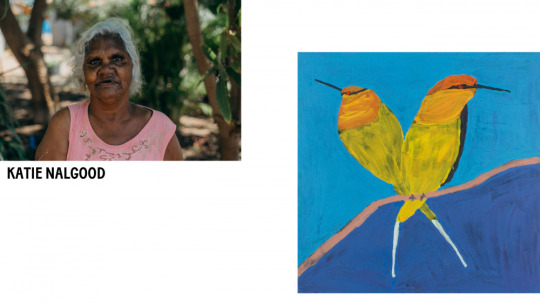
Australian Bee Eater by Nyangulya Katie Nalgood with Crystal Gardiner. Photo – Bobbi Lockyer.
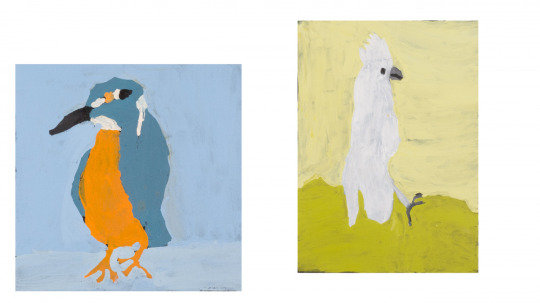
(Left) Cheeky One Nyangulya Katie Nalgood. (Right) White Cockatoo Nyangulya Katie Nalgood.
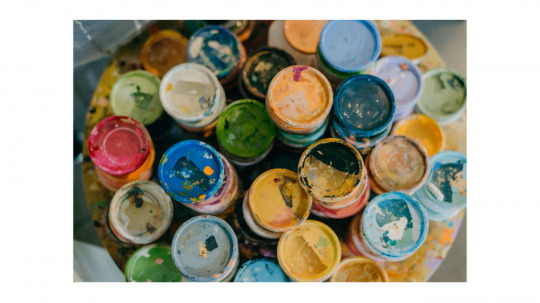
The paint pots at Spinifex Hill Studio are always in use! Photo – Bobbi Lockyer.
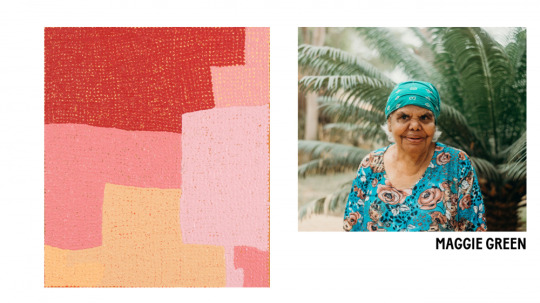
Myroodah Station 3 by Maggie Green. Photo – Bobbi Lockyer.

(Left) Myroodah Station 2. (Right) Myroodah Station 2. Both by Maggie Green.
Today we’re thrilled and honoured to be launching our second TDF Collect event of the year – Different Sorta Colour.
This exhibition showcases the work of five Indigenous artists – Doreen Chapman, Gloria, Maggie Green, Mulyatingki Marney, and Nyangulya Katie Nalgood – all of whom produce their work at Spinifex Hill Studio.
You might remember we hosted a solo show of Maggie Green’s art earlier in the year – our first exhibition with Spinifex Hill Studio. This studio facilitates the art making of around 40 artists, and functions more broadly as a creative hub for the Pilbara region, accessed by 100 artists from up to eight Aboriginal language groups each year. It stands on Kariyarra Country in the Pilbara region of Western Australia.
This particular exhibition encompasses a diverse range of subject matter and painting styles, with one thing in common – colour! In their own distinct way, each artist creates work that articulates their unique relationship to family, land, and culture.
Thanks must go to the incredible team at Spinifex Hill Studio, without who this exhibition would not be possible. This online show will go a long way to supporting Spinifex, at a time when other vital income-generating art fairs have been cancelled and postponed. We hope you love these glorious, vibrant works as much as we do!
Gloria
Born in the remote community of Jigalong in 1975, acrylic artist Gloria is a Martu woman working within a powerful matriarchal tradition that emerged from the Western Desert in the early 2000s. Her loose brushwork and pastel palettes have attracted critical acclaim for their highly affecting presence.
Gloria only learned to paint in late 2015, but has since exhibited her work across Western Australia and Singapore, and won several awards.
To engage with a Gloria’s canvas is to be swept into a vortex of colour and kinesis, offering many different ways of seeing and feeling. Her works are like weather – commanding and mercurial.
Nyangulya Katie Nalgood
Kimberley-born artist Nyangulya Katie Nalgood grew up on a station north of the Fitzroy River.
Rather than landscapes of Country, her practice frequently references types of birds: a visual taxonomy of the species whose songs formed the soundscape of her childhood, and now proclaim the beginning and ending of each day.
Nyangulya Katie looks to birds from across Western Australia, finding inspiration in their different colours, forms, and personalities.
Mulyatingki Marney
Mulyatingki Marney is a Martu woman born at Nyinyari near the Canning Stock Route. Her Country encompasses the Punmu, Kunawarritji and Karlamilyi River regions: regions of East Pilbara in Western Australia.
Mulyangki’s work depicts semi-abstract landscapes in vibrant acrylic. Contours and textures are articulated throughout her pieces, which often draw the eye toward a single unblinking waterhole.
An established and extensively collected artist, Mulyatingki paints with both Spinifex Hill Artists and Martumili Artists in Newman.
Doreen Chapman
Doreen Chapman was born in Jigalong and has spent her life moving between Western Desert communities. She grew up surrounded by senior artists, and as a deaf person, her practice has become an essential means of expression.
Skilled at producing both figurative and abstract works, Doreen’s work continues the Martu legacy of storytelling using a unique creative voice. She paints rapidly and prolifically in broad, textural brush-strokes, creating bold abstract compositions.
Doreen’s works showcase unexpected colour combinations with assertively minimal composition.
Maggie Green
TDF Collect proudly hosted Maggie Green’s first ever solo exhibition earlier in the year, and are honoured to bring you more of her stunning works as part of ‘Different Sorta Colour.’
Maggie is a Mangala woman based in Pilbara, a remote region in the north of Western Australia. Her artwork tells the stories of her childhood spent at Myroodah Station, a sheep and cattle station in the West Kimberley Region, where Maggie first learned her distinctive dot painting style from her mother and grandmother.
Today, Maggie’s works are semi-abstract renderings of landscape that translate memories of her childhood into geometric compositions of glowing pastel colour.
Every one of Maggie’s works begins with her sketching the same thing: two lines drawn down the centre in chalk representing the road at Myroodah Station where she grew up. She then draws two squares on either side of the road – the school and the toilet block – before painting over them entirely in seemingly random shapes. Her practice is extraordinarily time-consuming, incorporating two painted layers of gridded dots.
All works from ‘Different Sorta Colour’ are available to view and purchase now on the TDF Collect website until June 30th. For all sales and enquiries please contact [email protected]
‘Different Sorta Colour‘ A group exhibition by Spinifex Hill Studio artists Maggie Green, Mulyatingki Marney, Doreen Chapman, Nyangulya Katie Nalgood, and Gloria June 1st – 30th Online only at TDF Collect
0 notes
Text
Art Collecting Tycoon Budi Tek on Art, Museums, and Mortality

Budi Tek is undoubtedly one of the world’s most influential art collectors. The BIllionaire Indonesian-Chinese businessman, patron, and philanthropist, who made his fortune in the agriculture industry, began his collection in 2004 and has since amassed one of the world’s greatest collections of Chinese contemporary art. In 2007 he founded the Yuz Foundation “to promote contemporary art and artists, and contribute to various art initiatives,” and then in 2014 he opened the non-profit Yuz Museum in Shanghai to showcase his collection and to present exhibitions.
It’s no secret that Mr Tek is fighting pancreatic cancer – for the second time around. And it’s no secret that the diagnosis has caused Mr Tek to take rethink his future and the future of his museum and art collection. Which is why Mr Tek has taken the initiative to transform his private Shanghai museum, which is currently owned by a limited company, into a public institution. Mr Tek has already applied for non-profit status for his Yuz Foundation and plans to transfer ownership of the museum to the Yuz Foundation once the non-profit status is confirmed.
Mr Tek was recently awarded the title of Officer of the Legion of Honor by the president of the French Republic. Established in 1802, the Legion of Honor is the highest French order of merit for military and civil merits The title was bestowed upon Mr Tek in recognition of his “effort in advancing the cultural communication and cooperation between the two countries (China and France), as well as his contributions to the development of human society and mankind welfares.” The award is a fitting tribute to Mr Tek’s tireless efforts to advance communications between China and France.
TheAList.Art’s Nic Forrest got in touch with Mr Tek following the bestowal of the award and asked him a few questions.
When did you start collecting art and why?
I started to collect Chinese contemporary art in early 2000. The very first acquisition was one large painting from a young artist. Although the artist is not one of the so called “four kings” or a top artist, but when got it, I was very happy. The painting itself touched me deeply. Over those years, from 2004 to 2006, I collected a lot, and had a learning process in collecting art.
I myself am Indonesian Chinese. While I grew up in Indonesia, the majority of Indonesian populations were still laborers. But a few Chinese possess a large amount of money and have connections with the officials. Some of them did live in a lavish lifestyle, thus they hurt other groups’ ethnical emotion. So the Chinese population in Indonesia gave people an impression that they are rich but ignorant; they have no culture and are very mean.
After entering 21st century, Indonesia becomes a real democratic country. Many things become equal. The distribution of wealth is relatively equal. It is no longer like before. But on the other hand, how can we eliminate that bias on Chinese? We are not the same group any more—the Chinese is not like what they imagine.
As a new generation of the Chinese, we think we should build relationship with other groups. We have our own culture and tradition, and our art, etc. We hope we can share them. My interest is laid on Chinese contemporary art. Through contemporary art, artists talk about something different from politics. So sharing the art through Yuz collection artworks, we will give people a message. It is to realize cultural exchange by means of art. Even though you do not understand Chinese, and many Chinese do not understand Indonesian, we can communicate through art. My purpose is to set a platform like this, that’s how I started Yuz collections.
What is the focus of you collection and which artists form the basis of the collection? What are your main interests and ambitions when it comes to developing your art collection? Who are your favorite artists and which artists do you think are the most important to promote and acquire at the moment?
I spent years to learn which artists were important and which artists weren’t. In the end, I came to feel that a lot of works I once saw as important were no longer important anymore. This was a learning process, and during the process, every work in the collection has its meaning to me. Through the process, I have formed my collecting strategy and Yuz collection has formed its system.
One section of Yuz collection is sorting out the “history” thread of Chinese contemporary art history, by collecting the significant art works, especially oil paintings done in 1980s and 1990s, by those Chinese contemporary artists.
Another section are large-scale installations. I like to collect them, they are visually impressive, spiritually strong, like Maurizio Cattelan’s Untitled (Olive Tree), Fred Sandback’s Seven-part Right-angled Triangular Construction, Anselm Kiefer’s Fate of the Nations. Most of them are from western artists. The two sections echo with each other, forming the Yuz collection.
And in recent years, I’m not only looking at the past art history, I’m also exploring young artists and their new works, the works they have done with new media, to study the popular culture, to presenting the influence of the Internet era. I believe they are the future of art history.
I have an ambition to build a great contemporary art collection. The collection has a strong Chinese tradition that has been mixed with contemporary idea, while also explores the Western contemporary art’s history and future, but not limited to them, it looks into the development of contemporary art development in other regions as well, like Japan, Korea or Southeast Asia . A collection is a kind of cultural capital, more than a property. It is not only a financial issue, but also a social responsibility. It includes political, economic, and social elements.
What was the inspiration and motivation behind the development of the Yuz Museum and Foundation?
There is an old saying in Chinese, the true joy of joys is the joy that joys in the joy of others. The traditional approach to collecting is to seal things away, but I want my collection to be open, so that more people can share these outstanding works of art. I have entered the contemporary art field as a collector, but merely collecting artworks is not enough to satisfy me.
I hope to share the joy that art brings me with others and provide artists with a setting that can take in their artworks. To date, the best method I have been able to think of is to move from collecting artworks to establishing an organization, an art museum, and to finding a way to sustain it.
The year of 2008 marked a turning point in my career as a collector. I set up a non-profit art foundation in Jakarta, the Yuz foundation. There are three guiding principles of Yuz foundation: first, to collect contemporary art; second, to promote the art museum movement; and third, to play an active role in social welfare. As a patriotic overseas Chinese person, an Indonesian citizen and someone who has married into a Shanghai family, in 2014, I established Yuz museum in Shanghai. Foundation supports the museum, through initiating a lot of external communications and collaborations, like an invisible hand. The museum is a platform, which transfer the foundation collections and communication achievements into tangible exhibitions, promoting the exhibition development of contemporary art and to enhance the public’s understanding and appreciation of contemporary art. Although the physical nature of the foundation and the museum are different, the philosophies are the same,
What are your plans for the future development of the Yuz Museum and Foundation?
It is not a secret that I have had pancreatic cancer for one and a half years. It changed my horizon of being a human being. I’m still living and I’m still a useful person. Now I’m applying for non-profit status for Yuz foundation. Currently Yuz foundation’s ownership belongs to my company. But I want to turn this foundation into a public organization and can get public support, and then the museum and its growing programs supported by the foundation can be governed by a board of trustees, like the model that a lot of western museums have now. Other than this, Yuz foundation is also searching for a second site in China to house the foundation collections, to build a second museum to permanently show these collection artworks. And of course, the collection keeps growing. I have this wish that when students in China want to study Chinese contemporary art history, to study contemporary art history, they will come to these two museums.
How did your childhood and your experiences growing up influence and effect your love of art and the way you view and perceive art?
My education background is close to Han culture. I studied in Singapore and Hong Kong. They are all related to Chinese. At the time of late 1970s, in those days while I was in high school, I listened to Chinese folk songs from Radio Singapore every night. Until now I still can sing a lot of folk songs, including those revolutionary songs that many Chinese cannot sing. I developed a passion for Han culture. Now, in my system of collecting, I have a deep interest in collecting Chinese contemporary art, because they are things that I learned since a young age.
What are the most recent acquisitions of artworks that you have made?
In the last year, yuz collection acquired quite a few works, following the idea of collecting the history of Chinese Contemporary Art. One of them is Fang Lijun’s Series I No.5, which is the artist’s first try of oil paintings during 1990-1991, with his well-known bald figures.
Another recent acquisition is Senior Liu Wei’s Swimmer. This piece was exhibited in 1994 International Biennial of Sao Paulo. It is a very specific piece in Chinese contemporary art history.
The other new acquisition is Wang Guangyi’s The Mao Grid, one of the significant works from his early artist life. The Yuz collection has many works from Wang Guangyi, especially quite a few before the artist produced his “great criticism” series. The artist himself is an eminent pop-art artist.
While collecting these works, I’m always looking at the art history and I believe that the longer you look back, the farther you can look forward.
At the same time, more and more works created by emerging artists are entering the Yuz collection. They are the future of the art history. Every year in the Yuz museum we do exhibitions to present these new art to the public. Like last year, the Yuz museum organized the OVERPOP show and exhibited a group of newly acquired Yuz collection works. These art works are from a party of young artists, using new media, new materials to interpret the living present. The exhibition was very successful, very popular with visitors, and received great credits from the art community. Many young artists from the show received recognized prizes in the contemporary art world.
#artcollector#artist#art#artmarket#gallery#arts#museum#investment#collector#china#indonesia#fineart#paiting#buditek
1 note
·
View note
Text
Town Trip: 5 Items To Do in Berlin
Berlin is the right spot for a metropolis-split. The metropolis simply has something a modern-day traveler would need from a European funds. Youthful vacationers will benefit from the vibrant nightlife scene, with dance choices accessible nearly on daily basis of the week. Foodies will like the assorted assortment of reasonably priced eateries that depict each single delicacies within the surroundings. Artwork lovers will delight within the radical present-day art work scene found within the metropolis’s little galleries.
Welcome to Berlin!
The previous time I used to be in Berlin was in December. On the best way from Singapore to my hometown Gdansk, Poland, I used to be touring to my buddy Simon.
As a result of I just like the city so significantly, and just because it needs to be a portion of your German journey itinerary, I simply need to offer you 5 concepts for a quick metropolis journey to Berlin.
Why You Should Check out Berlin
Berlin could be very attention-grabbing to me because it’s extremely present-day and deeply historic. Up to date Berliners go to get the job achieved beside Checkpoint Charlie and take cocktails subsequent to the earlier Berlin wall. Berlin is welcoming to all vacationers who need to discover the town’s particular background and sensible expertise current day life proper right here now. Expect Berliners to speak with you in bars about precisely the place you could have seem from and why you’re on this article.
A energetic music scene will make Berlin the nice put for nightlife, however its heritage marks the metropolis as outstanding. Among the most turbulent episodes of 20th-century heritage happened in Berlin, to Berliners. Getting this heritage will guarantee a fascinating and shifting trip.
What are 5 Issues that You Should Do in Berlin?
Berlin is Germany’s capital of authorities and its cultural cash, with a vivid present-day art work and songs scene. Current day Berlin is an thrilling and invigorating location for laid-back vacationers, however document lovers will definitely adore it. So quite a lot of 20th-century historic previous skilled the Berlin of the guts of it, and there are many one among a form sights which simply take vacationers to the guts of it.
#1 Reichstag Creating
Germany’s Reichstag developing has skilled a extraordinary document and has bore witness to at least one political upheaval instantly after an additional. The Reichstag was first crafted in 1894 and hosted the federal authorities of the Weimar Republic proper till 1933 — however this fledgling democracy was to not previous. Hitler’s Nazi Bash set fire to the Reichstag in 1933 to grab administration of the German authorities, and it was nonetheless left poorly destroyed, and unoccupied. Following the 2nd Earth Warfare, when Germany was divided, the Reichstag sat unoccupied within the navy providers zone amongst East and West Berlin, even with some makes an try to make it the seat of the West German govt within the 1960s. The Reichstag remained unused proper up till the 1990s when it turned the seat of the governing administration of reunified Germany. Now, the creating is symbolic of latest Germany’s democratic values. Check out to search out out all about Germany’s outstanding background.

Berlin is a lot of these a historic funds of Germany.
#2 The Berlin Wall Memorial
The Berlin Wall Memorial is a could have to-see for any vacationers fascinated within the outstanding and traumatic historic previous of write-up-war Berlin. The Memorial is a preserved phase of the intense wall which as quickly as divided the communist East and the capitalist West Berlin. Members of the family who had when lived on distinctive sides of Berlin previous to the warfare, earlier than lengthy discovered by themselves dwelling in varied states. Proper after the wall was torn down in 1991, Berliners decided to proceed to maintain some sections of the wall in spot as a reminder of their divided historical past.

The world’s famed Berlin Wall.
Not solely is the Berlin Wall Memorial a terrific space to grasp concerning the background of Berlin, however it additionally has some superb highway art work far too. Most vacationers will acknowledge ‘The Kiss’ which exhibits the East German and Soviet chief in a disquieting embrace.
#3 The Holocaust Memorial
The Memorial of the Murdered Jews of Europe, colloquially considered the Holocaust Memorial, is an individual of the world’s most deeply transferring memorials of remembrance. The Memorial is product of nearly 3,000 slabs of fluctuating heights which glimpse like graves. They’re very comparable in colour and situation to the mass graves, marked with tough stones, of Holocaust lack of life camp Treblinka. There is no such thing as a central a part of the Memorial, however the slabs encourage friends to only take the time to wander throughout the web site and replicate on the horrors of the Holocaust. The city of Berlin has not tried out to bury and neglect its Nazi earlier. As an alternative, this monument goals to afford the Jewish victims of Nazism the respect they’ve earned.

The Berlin Holocaust Memorial.
#four Checkpoint Charlie
Checkpoint Charlie was as quickly because the border crossing checkpoint for any particular person touring between East and West Berlin. The border checkpoint was named Checkpoint Charlie as a result of which is the third letter within the phonetic alphabet and this was the third allied checkpoint. The title caught given that of the American troopers who manned it. At some stage in the Subsequent Globe Warfare, the allies managed this checkpoint, and the People stayed on simply after the warfare was round. All by way of a interval of escalating tensions, American and Soviet troopers had a brief confrontation proper right here in 1961 however it didn’t amount of cash to actual battle. Concerning the course of Soviet-period, numerous East Berliners defected to the West from this checkpoint. The checkpoint was demilitarised in June 1990. Immediately, vacationers can go to pose with the ‘You Are Now Getting into the American Sector’ signal and with the actors dressed as troopers who man it now.
#5 Brandenburg Gate
The Brandenburg Gate is Germany’s most legendary piece of structure and is famed world-more than for its monumental, neo-classical model. The gate was created in 1791, within the mannequin of Athens’ Acropolis. Beforehand talked about the gate is the world-famous ‘Quadriga’ statue, which displays the Goddess of Victory pulled on a statue by four-winged horses. Frederick William II, the King who commissioned it, supposed it to be known as the ‘Gate of Peace’, however the establish was forgotten by historical past. At present, the Brandenburg Gate has look like a picture of a democratic and unified German republic, the place on the time it marked the division in between East and West Berlin.

Biking all-around the Brandenburg Gate.
When the Brandenburg gate was preliminary opened in 1989, so fairly just a few friends from each equally sides of Berlin visited, the monument was critically harmed. After a refurbishment within the early 2000s, the Brandenburg Gate is healthier geared up to get guests than ever and is one explicit of Germany’s prime vacationer points of interest.

The Brandenburg Gate at night.
Berlin will not be in need of beautiful structure and spectacular monuments for the curious traveler to be taught. The vital internet pages of Berlin are distribute all by way of this bustling money metropolis, so vacationers can use bicycles to check out Berlin, or a ticket-acquiring service to allow them get from a single aspect to the opposite. For searching for bus and put together tickets or for particulars concerning the connections you need to use the Omio app. We took a apply from Berlin to Gdynia and this utility was a spot precisely the place we noticed very low educate charges. What ever you love to do together with your down-time, regardless of whether or not to check out historical past, devour terrific meals or admire a shocking organising, there’s an information for everybody in Berlin.
What’s your favorite concern to do in Berlin?
Pin It For Afterward

source http://cheaprtravels.com/town-trip-5-items-to-do-in-berlin/
0 notes
Text
Ryan Gander
“Ryan Gander, one of Britain's most acclaimed contemporary artists, has opened his largest UK solo exhibition at Manchester Art Gallery.
This year, he is also exhibiting in London, Tokyo and Singapore. Above, he is pictured with his work Magnum Opus, which consists of a pair of animatronic eyes on the wall of the Manchester gallery. Instead of the visitors looking at the gallery, the gallery is looking at them.
"Spectators go into art galleries and make judgmental decisions," Gander explains. "I always thought that you could see it in their eyes, what they were thinking. So I thought it would be nice that the institution is given the ability to critique as well, with its eyes."

These clusters of colours are actually palettes that Gander used to paint portraits of people he has known. In an attempt to subvert conventional portraiture, the artist has destroyed the paintings themselves and put the palettes on show instead, leaving the viewer to imagine each person from the leftover blobs.
It is one example of Gander asking his audience to use their imaginations to fill in gaps. "I've always thought it was really strange that artists made paintings and threw away the palettes, because the palettes are like happenstance abstract wonders," he says.
This view on palettes is one that Gander and I share. I adore colours. The idea of palettes as pieces of art gives another side to abstract art as it means that sometimes art is being created unintentionally. This collates with my belief that art can be anything that is given the intention of being art. Ganders painted portraits are left as a collection of colours. The mind is left to fill in the blanks and create an idea of what the colours represent about the person
"For me, the phenomenon of having the palette, which is the by-product, the left-over, the fallout of making a painting, is infinitely more wondrous than spreading oil on canvas to make a picture. It seems quite a futile, illogical, unintelligent act to me."
Many of Gander's works celebrate the wonders of the imagination, and he has created a mock government advertising campaign urging people to harness their imaginations.
"If you see problems in the world, a lot of people moan about them or criticise," says the artist. "I think it's better to work from example - just do it. You can change anything yourself. If you're intelligent enough and creative enough, you can infiltrate any system to make any change happen."
The adverts carry the logo of the Department for Business, Innovation and Skills - but it is not a real government campaign. A mock TV commercial is being screened in the gallery, while posters and billboards are going up around the city.
Putting a new spin on the common art gallery gripe that "my child could do better than that", this sculpture - and others like it - are marble replicas of the dens that Gander has made with his five-year-old daughter. "The naivety of children gives them this beautiful ability to approach artworks without any cultural baggage that adults have with them," says Gander.
"Adults are genuinely scared, unless they've had visual training, of approaching contemporary art because they think they're going to get it wrong, or be made a fool of, or say the wrong thing. But it's very, very simple. There isn't a wrong thing to say. Any response is a worthwhile and valid response. Children don't worry about it."
This fear towards understanding art is something I continuously battle. I usually struggled to decipher contextual meanings behind pieces of art and rely on the emotional power a piece has on me. This next sculpture by Gander is extremely powerful to me. He has captured her gaze perfectly and the longing in her eyes are captivating to me. The idea of a gallery looking at you instead of it functioning in its original designed purpose is new and exciting to me as I’d never thought of it before. Being watched is something I think about often but I’m not sure I quite know what I would want to do to respond to that idea

Gander has also freed Edgar Degas' elegant dancer from her formal ballet pose and put her in a new sculpture that looks down on visitors as they enter the Manchester gallery - another example of the art watching the onlookers.
"She was once an artwork, and then she came to life and she's looking at you," he says. "She's had the gaze for decades and decades, and now her gaze is returned upon the spectator."
Peanuts illustrator Charles M Schulz has inspired a number of Gander's works. For the Manchester exhibition, he has framed 150 blank cartoon strips that Schulz used to draw Snoopy and Charlie Brown. The cards were left over when Schulz died in 2000.
"It makes me want to cry, this work," Gander says. "It's camouflaged as hardcore conceptual art, but it's actually heartbreaking romanticism." The work, he says, is all about what could have been if Schulz had not died. In an alternative reality, he would have lived and these strips would have been full. "So it's a life beyond him," Gander adds.
Gander is also creating a £340,000 public sculpture that will be placed in Beswick, east Manchester, in September. An artist's impression is shown above. The sculpture, titled Dad's Halo Effect, comprises three 3m (10ft) stainless steel chess pieces that are based on parts of the steering mechanism of a Bedford truck. Gander's father made such trucks while working for Vauxhall Motors in Ellesmere Port, Cheshire, in the 1980s.”
Article Source:
https://www.bbc.co.uk/news/entertainment-arts-28129897
0 notes
Photo
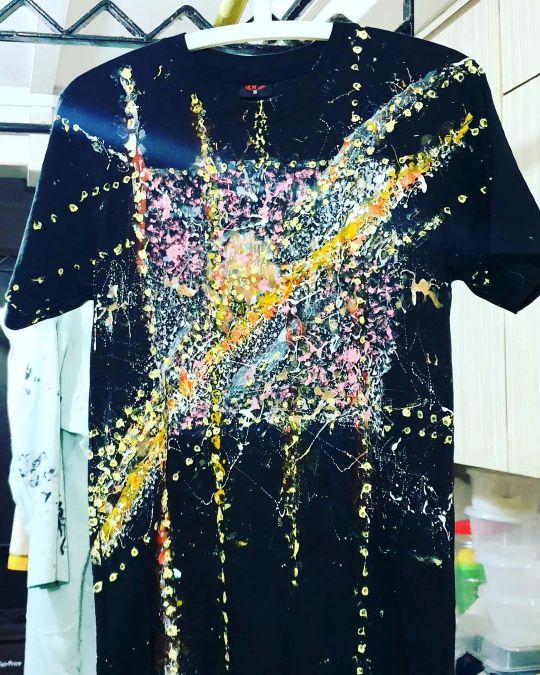
Art Apparel By Art R'eev "Crossing Borders" Small (S) Enamel 2022 You wouldn't have to worry that others may be wearing the same T-Shirt as you on the street. 100% Authentic 100% Handpainted 100% Cotton Machine Washable. Available only one piece per artwork. It is not mass production as it is painted not printed. Out for GRAB...!!! POP UP ART MARKET Studio N.E.O.N @studio.n.e.o.n 32 Haji Lane, Singapore 189225 24 & 25 Sep 2022 Sat & Sun 1200-2000 Hours See you there...!!! #iamartreev #art #artapparel #arttee #artTshirt #artcotton #artfabric #arttextile #artmarket #abstractart #abstracttee #abstractTshirt (at Haji Lane) https://www.instagram.com/p/Cia2MB0BIjy/?igshid=NGJjMDIxMWI=
#iamartreev#art#artapparel#arttee#arttshirt#artcotton#artfabric#arttextile#artmarket#abstractart#abstracttee#abstracttshirt
0 notes